Implementing a winning SaaS SEO framework can help you grow fast.
After helping hundreds of SaaS businesses build out their search engine optimization campaigns, we’ve found the most often-asked questions and pain points and compiled this in-depth guide to help you during your search engine optimization journey.
Let’s dive in. 👇
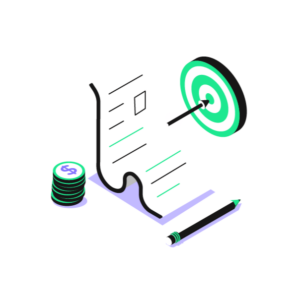
SaaS SEO is the process of optimizing a SaaS company’s website in order to increase its visibility on search engine results pages (SERPs) and attract more organic traffic.
The aim is to make the website an authority in its niche by improving its ranking for relevant keywords so that more potential customers can find it easily.
In essence, we’re looking to capture individuals within our target audience who are searching for terms, topics, and questions in Google and other search engines that are highly relevant to our product.
There are plenty of marketing channels and strategies that you can choose to invest in as a business to drive growth for your SaaS company.
Great questions, followed by a great answer:
By focusing on SEO, you’re creating an evergreen, predictable, and scalable SaaS growth strategy.
If you take a look at any of the most successful SaaS companies, you’ll find a strong SEO and content marketing initiative that is at the forefront of driving growth to their businesses.
There are two key reasons why your business should be focusing on leveraging SEO:
The results that come from SEO and content marketing efforts compound over time.
By putting a proper search engine optimization strategy in place, you will continue to see consistent growth:
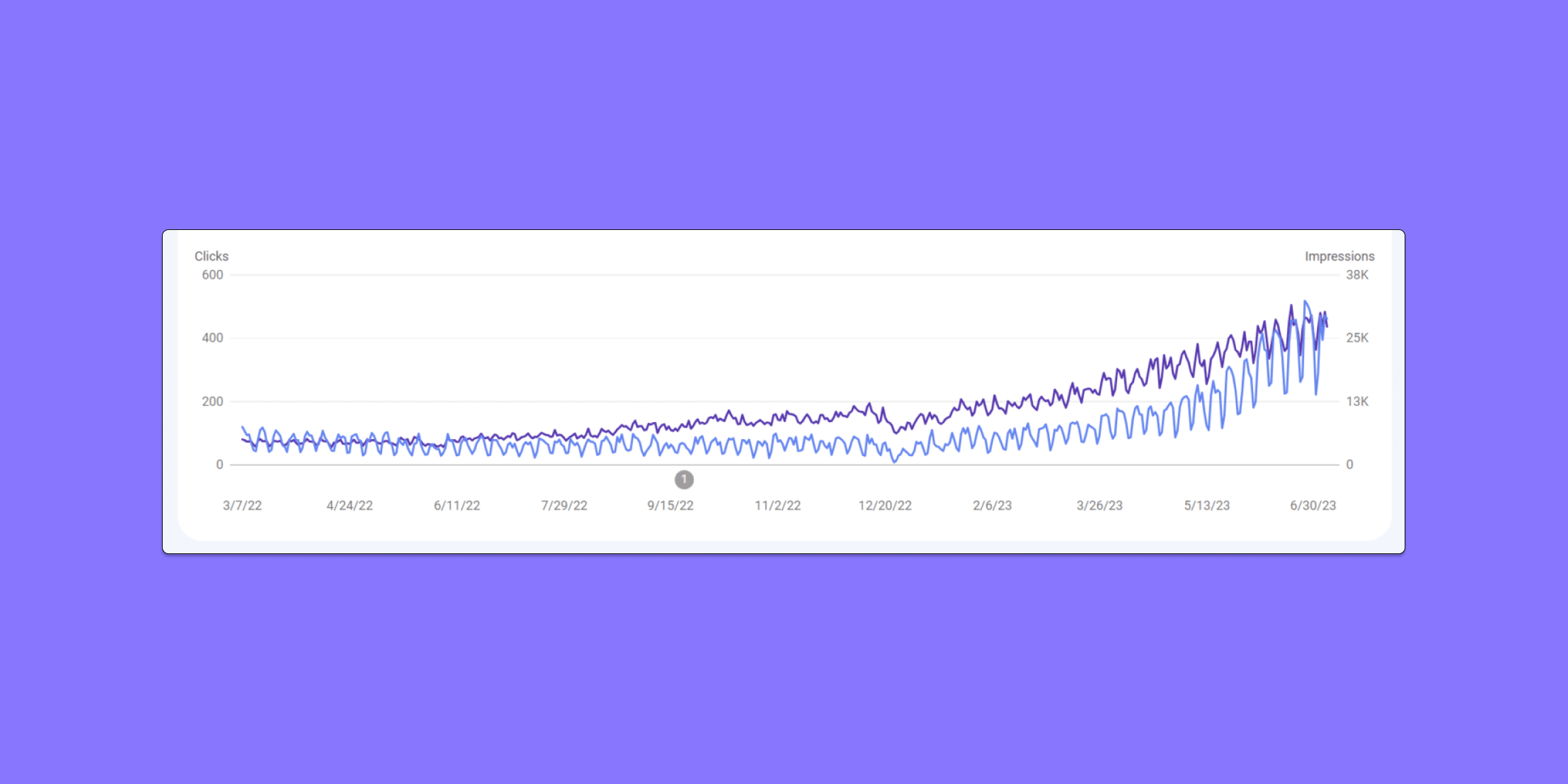
Since we also generally know the organic search volume behind terms that are being targeted, this makes organic traffic predictable, and easy to calculate ROI against a campaign.
Paid advertising can be extremely effective and attractive, there’s no doubt about it.
Setup a proper PPC campaign, and you can start seeing the lead funnel fill up pretty quickly, and without the need to wait for the time it takes SEO to really start to kick in.
The issue is that almost always, the cost to acquire a user through paid advertising increases gradually over time.
Over time, costs will rise as more competitors enter the market and bid on the same target keywords, as you’ve already started to exhaust your audience.
Paid advertising is a pay-to-play game, and as soon as you stop spending, growth immediately comes to a screeching halt.
SEO works in the exact opposite way.
With SEO, your invest upfront and slowly start to yield results from a campaign over a 5-6 month timeframe as you start to gain clear, measurable results and traction from internal leads.
The marginal cost to the business to acquire a new user using organic traffic will decrease over time as your organic traffic grows and continues to compound.
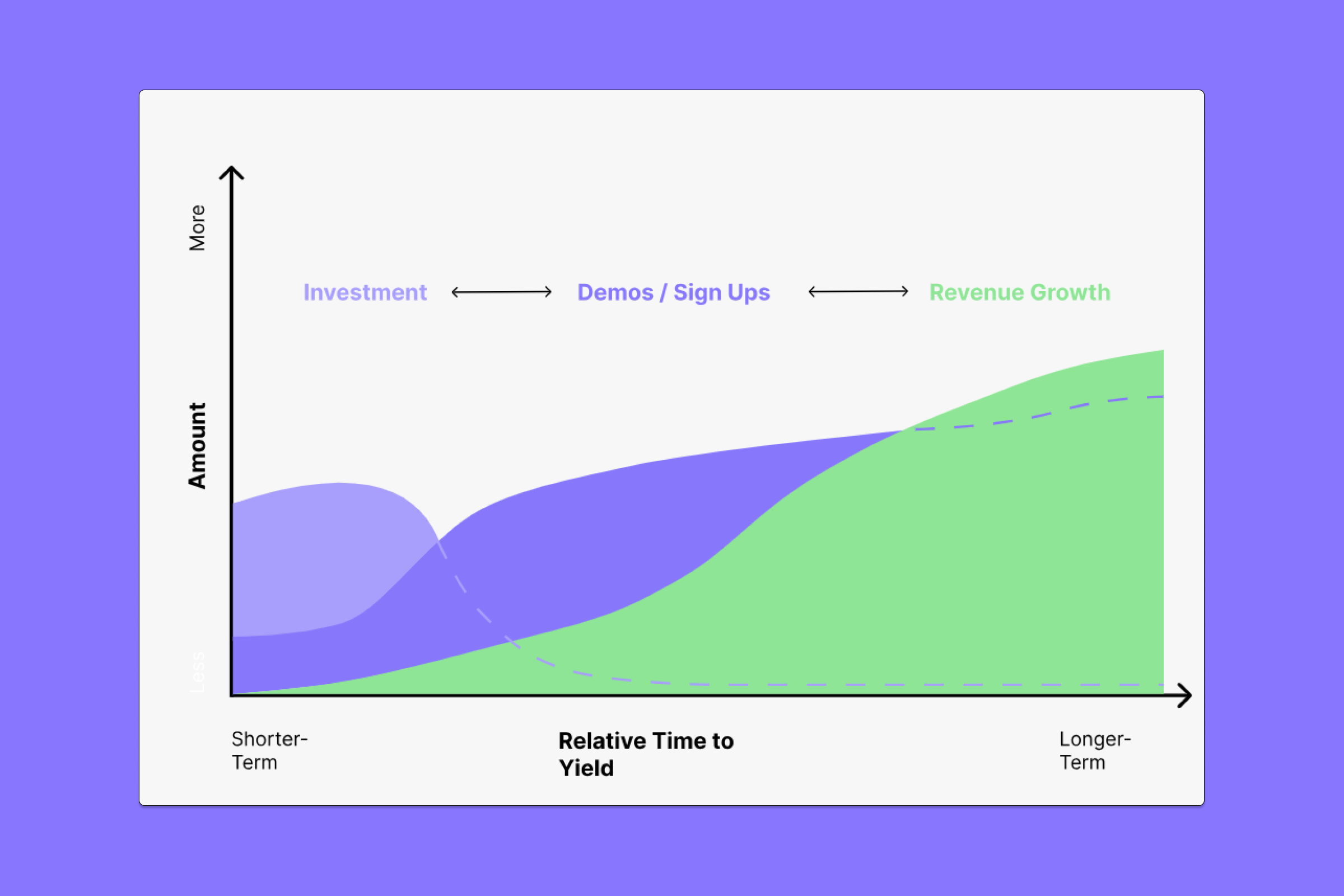
This makes SEO the right long-term growth strategy for SaaS businesses that are looking to slowly turn off the paid advertising funnel, and focus on an evergreen traffic driver with minimal maintenance and a diminishing cost.
Starting a campaign is going to depend on both where your company is currently at as well as your marketing budget.
If you already have an internal team in place and you’re not ready to hire a full-time SEO, working directly with an experienced consultant can be a great way to set strategy and direction for your internal team when it comes to an SEO imitative.
When you’re looking for help with the heavier lifting of both SEO strategy and SEO services, a well-vetted SaaS SEO agency can be an excellent option.
Working with an agency definitely has a higher cost than with a solo consultant, but if you’re looking for a full end-to-end option, the agency model is generally the way to go.
There are definitely a lot of “SEOs” and “Agencies” out there that give the industry a bad name, so you want to know what you’re looking for when selecting either a consultant or agency:
These are just a few key things to keep in mind during the search.
Mileage definitely may vary, but you’re looking to pay normally $200-$350+ p/h for a top-notch consultant, and between $5k-20k+ per month for working with a great agency.
It probably goes without saying – but as with most things, you usually get what you pay for when it comes to hiring a consultant or agency.
Search Engine Optimization is the practice of optimizing a website in order to allow for it to rank high in search engines, to drive visibility and search traffic which eventually translates into leads for the business.
But what is at the core of search engine optimization, and why is it important for helping your SaaS organization to grow?
If we peel away all the layers when it comes to SEO and truly boil it down to the 80/20 rule, the following three areas are where you should be focusing your efforts:
Let’s dive a bit deeper into each of these three core categories.
On-Page SEO includes the process of optimizing all of the elements on a page for best practices when it comes to ranking in search engines.
Let’s take a theoretical example to demonstrate the specifics of On-Page SEO.
Imagine for a moment that you’re a Digital Marketing Manager for a SaaS platform that allows for the hosting and promotion of virtual events.
You’ve done a bit of research and determined that you want to create a landing page that ranks on the first page of Google for the term “virtual events platform”.
What do you need to do next in terms of bringing this page to fruition, and giving it the best chance of rankings from an On-Page SEO perspective?
For starters, you’re going to want to include the following items:
saascompany.com/virtual-event–platform/
Now, these are only a few of the many items which make up On-Page SEO, but certainly are some of the most important.
As you start to become more familiar with the important aspects of On-Page SEO, take a look at some of your competitors that are ranking for keywords that you also would like to target.
Type the primary search term into Google, open up their pages, and examine what they’re doing when it comes down to focusing on primary and secondary keywords, or what type of questions and topics they’re covering within their content.
Related Content: The 101 Guide to Keyword Research for SaaS
This is always the starting point for both on-page SEO and content marketing – examine what is already working and what Google is already rewarding and create pages/content that are 10x better.
That’s how you start to win.
Running on Chrome, and want to easily get a snapshot on a page-by-page basis?
Check out Glen Allsopp’s Detailed SEO extension – it gives great, quick insights into the elements on a page, including links, schema, and all of the important on-page SEO items you’ll want to be looking at (even for your own pages):
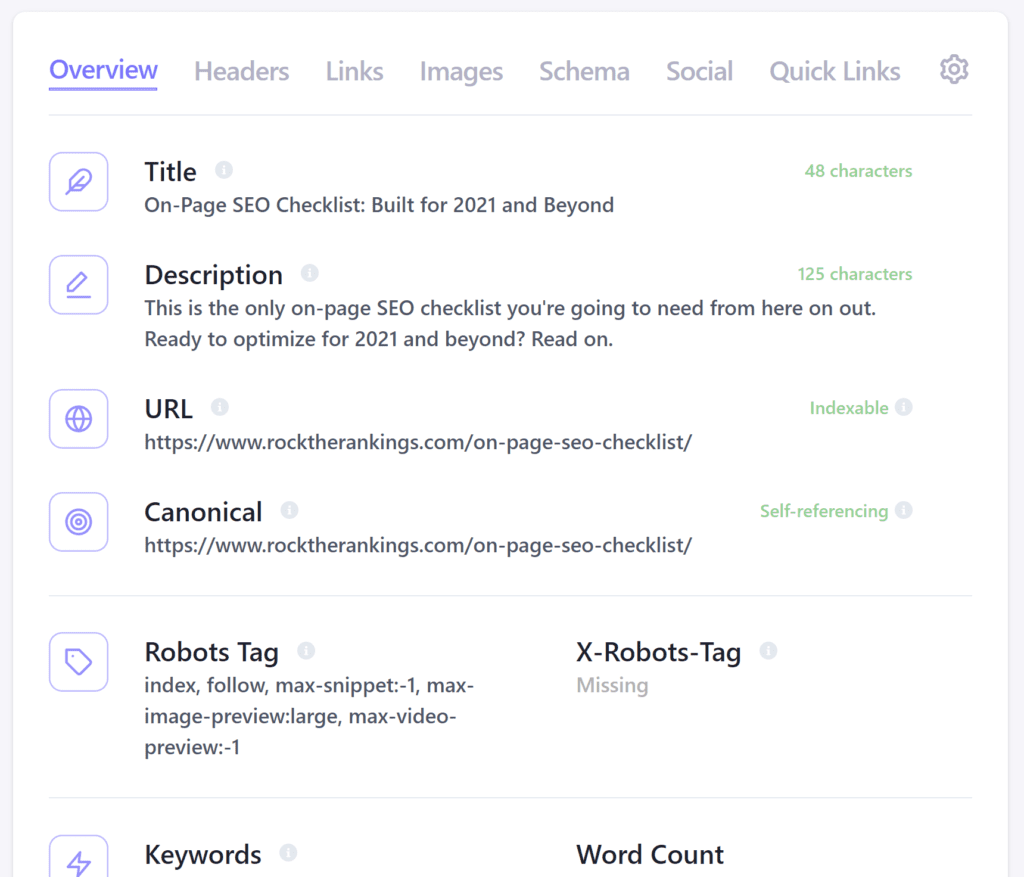
If you want to dive deeper in, check out our On-Page SEO guide for a comprehensive overview of what you need to be watching out for on a page-by-page basis.
Content marketing is a pretty self-explanatory term at an initial glance, but also has many sections that roll off the back of it.
In the broadest sense, content marketing is the process of marketing your company by creating valuable content for your potential customers.
Content marketing has two main objectives when it comes to SEO:
When we talk about content marketing, it’s about having a strong focus on not only the money or purchase pages of a website, also known as “landing pages”, but also on the top-of-the-funnel informational content that helps to drive brand awareness and slowly push users through the funnel.
Related Content: Content Strategy for SaaS
If again, we take the example of the keyword “virtual event platform” and look at top-ranking pages in Google, we will notice a few brands doing a great job at creating landing pages to answer this query:
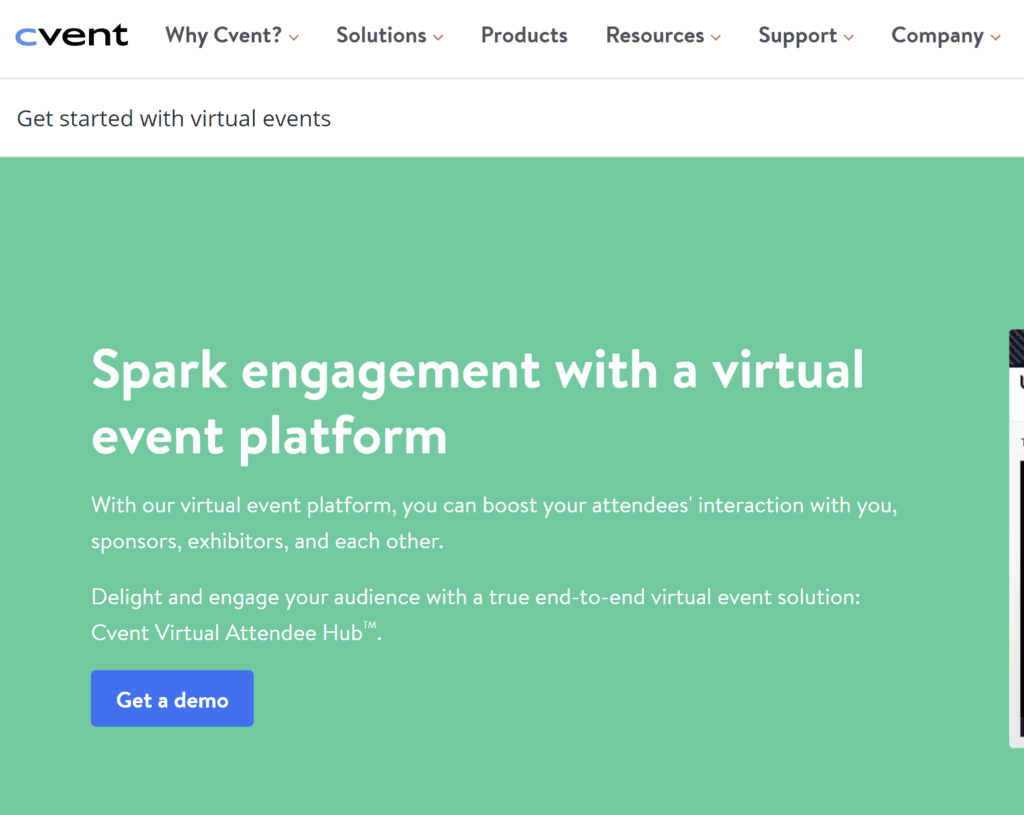
Cvent is not only creating service landing pages related to the features and functionality of its product where there’s a clear intent for the user’s searching for bottom-of-the-funnel keywords, but they’re also focused on creating great informational content around the same topics to hit top funnel keywords as well:
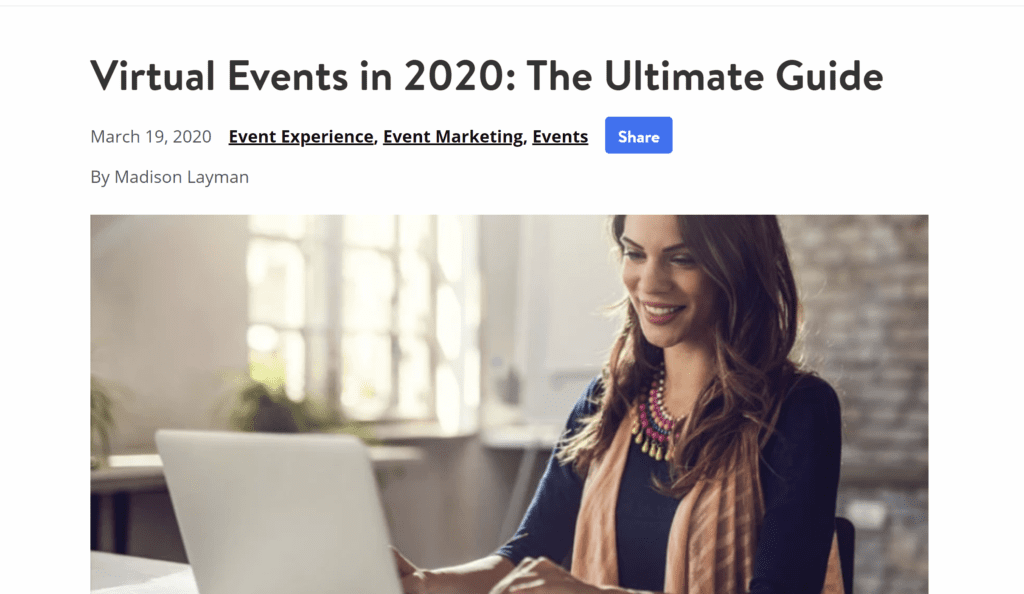
To summarize this topic in one sentence:
Conduct keyword research and topical analysis with the end goal of creating excellent content and copy which speaks to your target audience, and targets what they’re searching for in Google at the different parts of the funnel.
Having an authoritative website in the eyes of Google and other search engines is going to go a long way when it comes to ranking high in the results pages and being able to drive inbound leads for your business.
Backlinks have always been important when it comes to SEO and will continue to be one of the key ranking factors for search engines.
If you’re not already familiar with backlinks, the term refers to other websites that are linking to your website.
In the most simple of terms, you can imagine that every time another website links to your business’s website, this counts as a vote.
Over time, votes add up and signal to search engines that your website is worthy of receiving search traffic.
Backlinks are meant to be acquired in a natural way.
Related Content: Link Building for SaaS
As you build great content that provides value to the searcher, as outlined in the previous content marketing section, other websites will naturally link to your website over time.
You should always aim to create the best resources out there related to your industry and service offering in order to become the go-to SaaS authority in your area of expertise.
When you’re creating the best value through content that helps others, you will naturally build backlinks over time.
You might also be interested to find out where your competitors are linked from, which you can do using a tool such as Ahrefs.
Simply enter your competitor’s URL, and click on “Backlinks” from the left-hand menu:
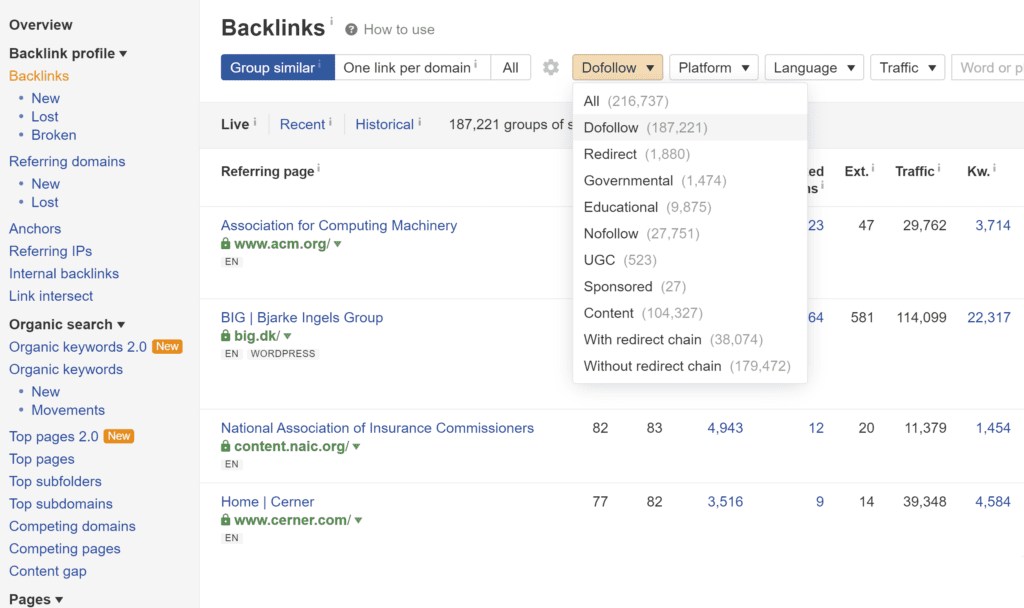
You now have a full list of your competitor’s backlinks, including to which page on your competitor’s site the link is going.
This will give you a ton of insights into which type of content is being linked to the most, and how you can replicate competitor strategies to also put a link-building campaign.

The interworking on how Google search works can be broken down into three core pillars:
Let’s take a deeper look into each.
In this stage, Google uses crawlers to discover and download content from websites.
Google utilizes a complex algorithm that sends these spiders through an assortment of sites, following links from one page to another.
As the spiders find new content, they store the data in an enormous database called the Google index, which consists of hundreds of billions of web pages. From here, the search engine retrieves and displays information based on user queries.
Indexing is the process of analyzing the content and context of web pages to understand their purpose and relevance.
During this phase, Google interprets various signals, such as keywords, meta tags, and other elements, to classify pages and determine their ranking in search results.
Efficient indexing relies on clear website structures, the strategic use of relevant keywords, and valuable information provided within the pages.
When you conduct a search on Google, the results displayed are called Search Engine Results Pages (SERPs).
SERPs are made up of both organic and paid search results.
When you enter a query, Google’s algorithms search their index for relevant pages and return results based on quality and relevance.
Google presents various types of search features on SERPs, including Google Ads, People Also Ask, and knowledge panels.
Each of these elements is designed to provide users with quick and efficient access to the information they are searching for.
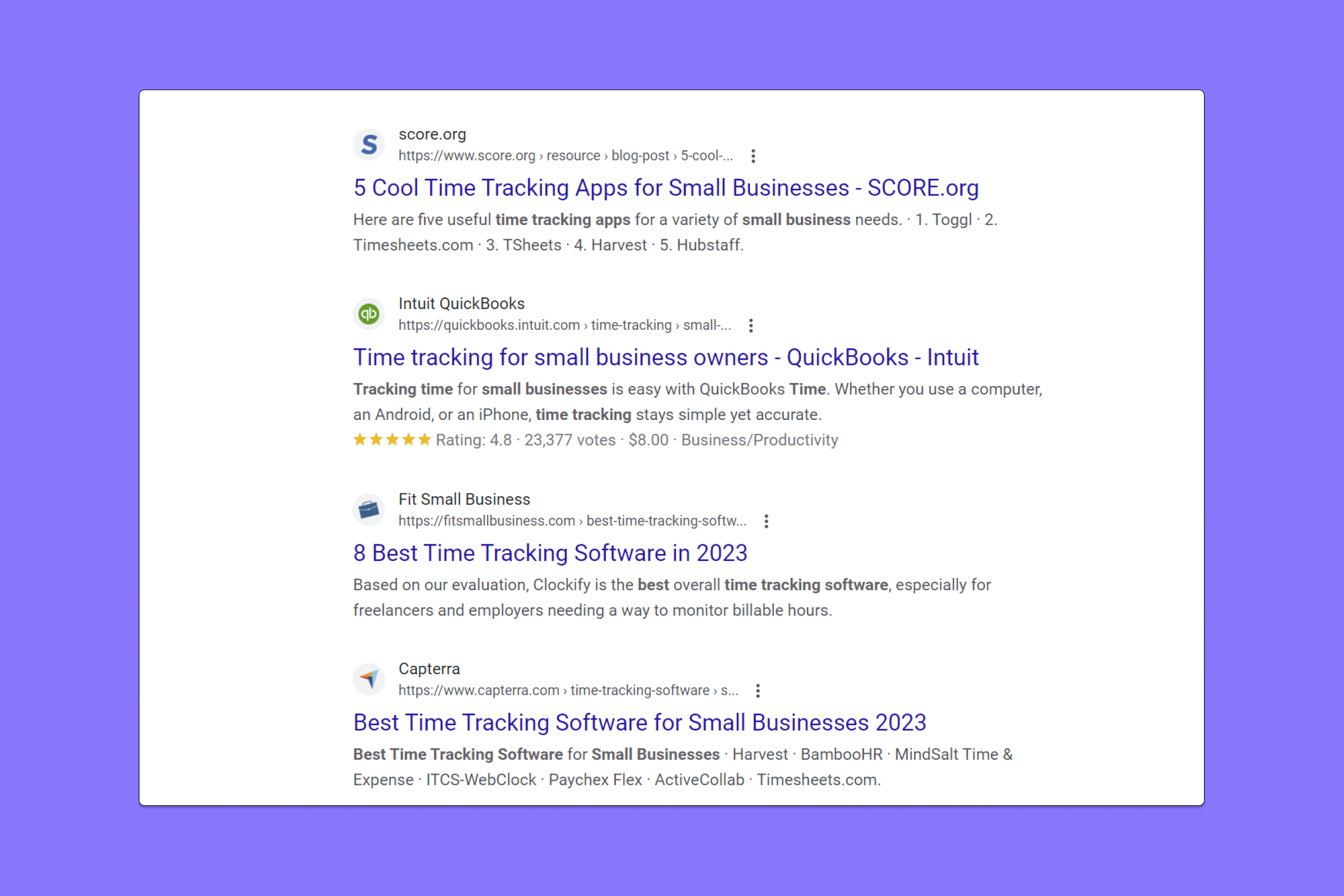
When it comes to Google Search, several ranking factors determine the order in which search results appear.
These factors help Google decide which pages are most relevant, authoritative, and trustworthy to users’ queries:
Keywords and content play a significant role in ranking.
The presence of relevant keywords in your content, titles, meta descriptions, and URLs is crucial for search engines to understand the subject matter of your content.
Including semantically related keywords helps Google grasp the context and improves the chances of ranking higher for a particular topic.
Google’s automated ranking systems are designed to present helpful, reliable information that is primarily created for the benefit of people, not solely to gain higher search engine ranking.
By focusing on providing valuable content that meets the searcher’s intent, you increase the likelihood of your site ranking higher in search results.
An integral part of Google’s ranking algorithm, backlinks work like votes of confidence for a webpage.
The more high-quality, relevant incoming links a webpage has, the more likely it is to rank higher in search results.
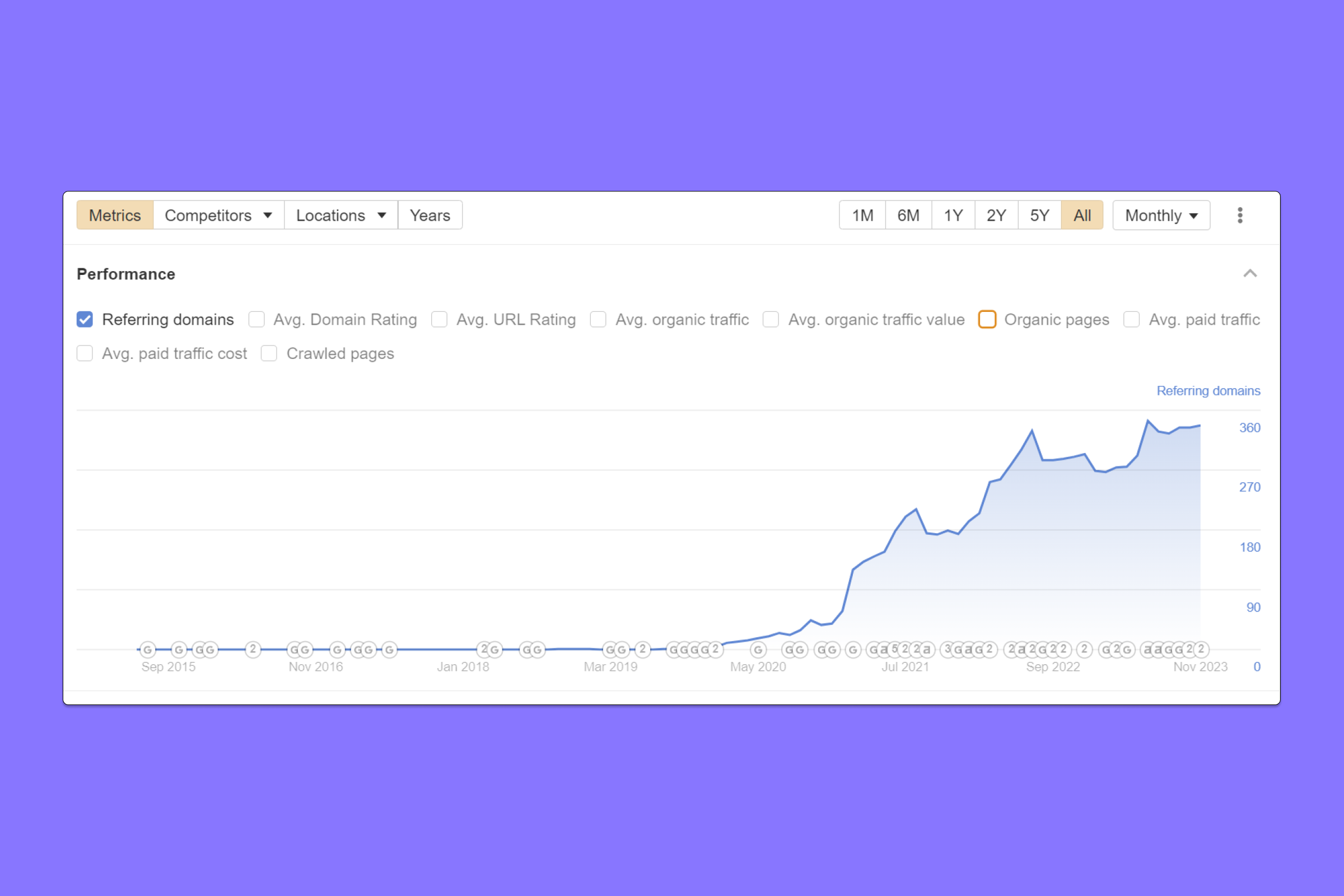
This is because search engines view these links as endorsements, signaling that the page is providing valuable information.
The quantity and quality of backlinks matter, with more authoritative backlinks often translating to better rankings.
Internal links also contribute to site authority and improve user experience.
By linking pages within your website to other relevant pages, you help visitors and search engines navigate your content more easily, distributing link equity throughout the site.
Topical authority relates to your website’s expertise and proficiency in a specific subject area.
Google takes into account the depth and breadth of your content around a theme(s).
Establishing yourself as an authority in a particular niche can improve your ranking for relevant queries.
The trustworthiness of a website is crucial in establishing authority and ranking in search results.
To enhance trustworthiness, ensure your website is secure, well-maintained, and consistently updated with accurate and reliable information.
This includes having visible contact information, privacy policy, terms of service, and other trust signals.
Finally, user experience plays a significant role in search ranking.
Factors like site speed, mobile-friendliness, and navigability affect how users interact with your website.
By optimizing these elements, you not only create a more favorable user experience but also increase the likelihood of ranking higher in Google search results.
If you’re not familiar already with the inner workings of SEO, the process for ranking high in the search engine results page for a particular keyword might seem a bit complex.
When we stick to the 80/20 of SEO and focus on what truly moves the needle, then you truly start to see the magic happen.
Most SaaS companies are focused on one single objective, which is building a great service – and that’s great.
Building the best service out there to help your users accomplish their tasks is why the business is alive.
But without putting a focus on marketing your actual service, you certainly won’t be found as easily or by as many users as you could be.
This is why investing time and resources into SEO (as well as other digital marketing channels) is essential to driving leads, sales, and revenue for your SaaS business.
Start by doing the basics right when it comes to SEO, and then move on to more advanced tactics as you grow your organic traffic:
When you do these basics right, you’re bound to rank high and be found by your target audience in the search results.
In the following chapters, we’ll be taking a deeper dive into each of these pillars providing a step-by-step on how to properly build a winning campaign by executing on each of the pillars.

Remember – we want to focus on doing the basics right, and a great starting point is ensuring that we have a website that is accessible to Google’s crawlers.
A lot of SaaS websites run the front-end marketing side of their business off of WordPress, and the back-end using their own technology.
This is an example of a great way you can utilize a customizable CMS that plays great with SEO, without overcomplicating things with a custom-built website with the newest technology.
Having a website that is SEO-friendly and allows for easy crawling and indexation is going to go a long way in helping to drive search rankings.
Imagine you’re building a new house. You want to get the foundation right to avoid any problems down the road.
If marketing is a priority for your business, you want to ensure that the foundation is set, and gives you the best chance of success.
If you’re a small business or startup just getting your initial SaaS product to market, stick with the tried and tested technologies that are known to play well with SEO – we’re big fans of both WordPress as well as Webflow.
If you’re working for an established SaaS company that’s running on a custom-built or more advanced setup – that’s fine – you simply want to make sure you’re crossing your T’s and dotting your I’s when it comes to Technical SEO.
A large number of first-time website visitors don’t immediately sign up for a demo or free trial.
It’s essential to educate, build trust, and add value for these visitors.
This can be achieved through a lead magnet, such as a free template or a sneak peek of the software without requiring sign-up.
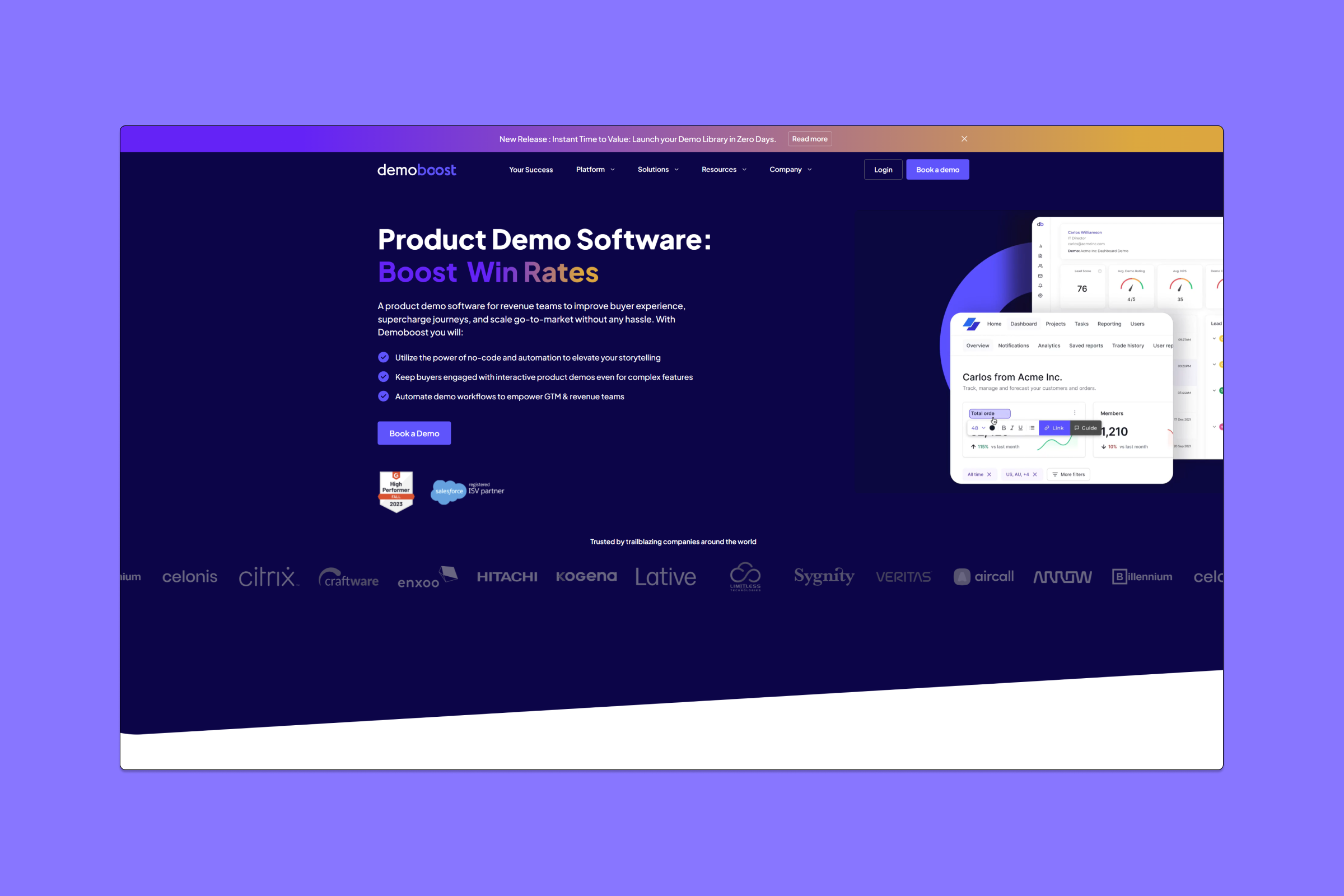
This attracts users and offers value while guiding them towards signing up and using the software. Wrike, for instance, effectively uses lead magnet templates in this manner.
Clarify your value proposition in a concise, three-point section emphasizing the user’s benefit and the core pain that your product resolves.
Ensure that your value proposition is clear to visitors and focuses on both the desired outcome and the pain you’re solving at a high level.
Although most SaaS companies feature customer logos on their home pages, many don’t do enough to quickly establish trust.
Video testimonials can rapidly build trust with visitors and lead to conversions and future paying customers. Ideally, include three video testimonials on the homepage, each addressing a core pain and desired outcome.
Monday.com is a great example, showcasing their case studies and video testimonials directly on their homepage.
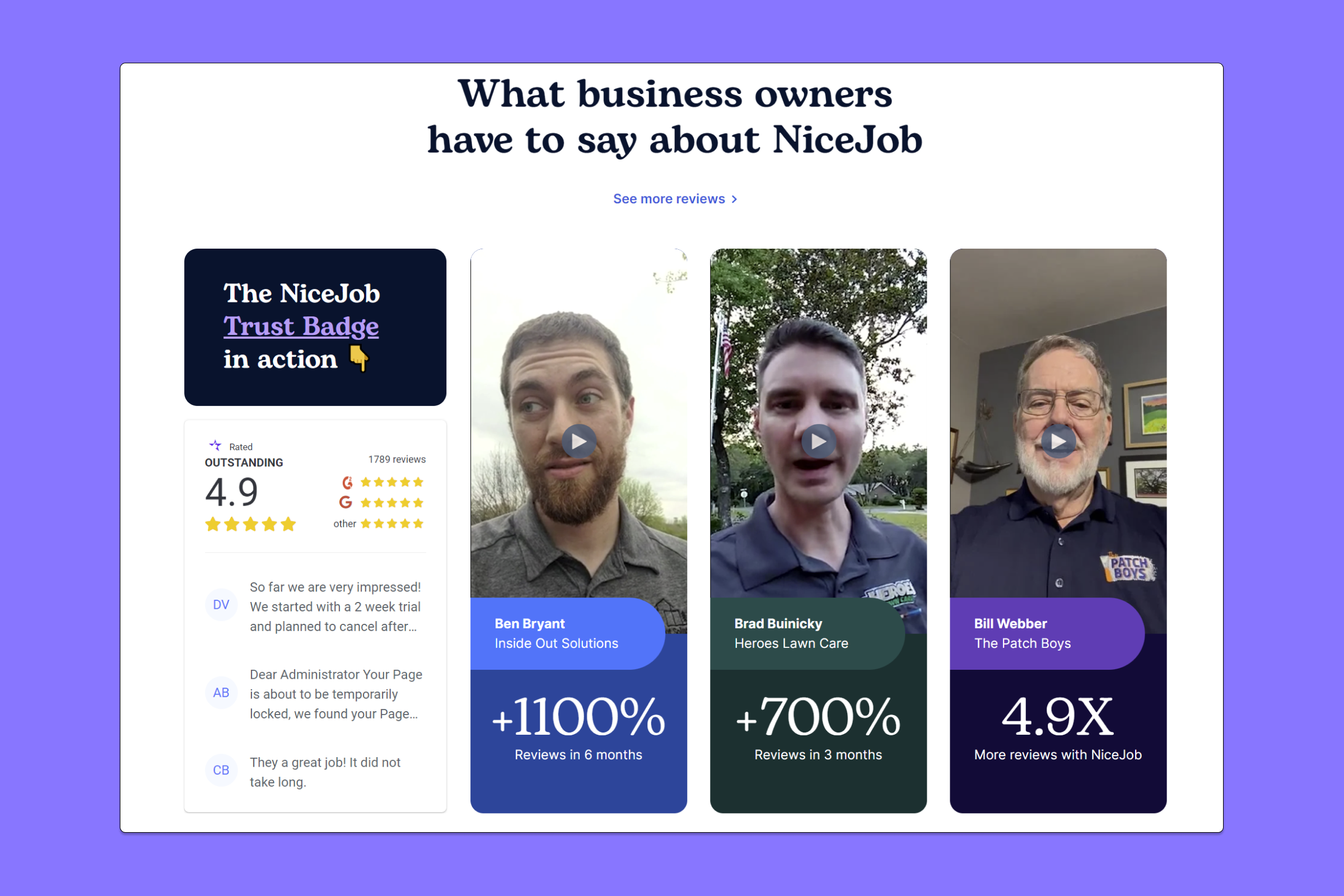
Including relevant pillar blog content on your homepage should be done in a static manner, giving you full control over the content displayed.
Instead of showcasing the latest blog posts, strategically create and link pillar content on your homepage:
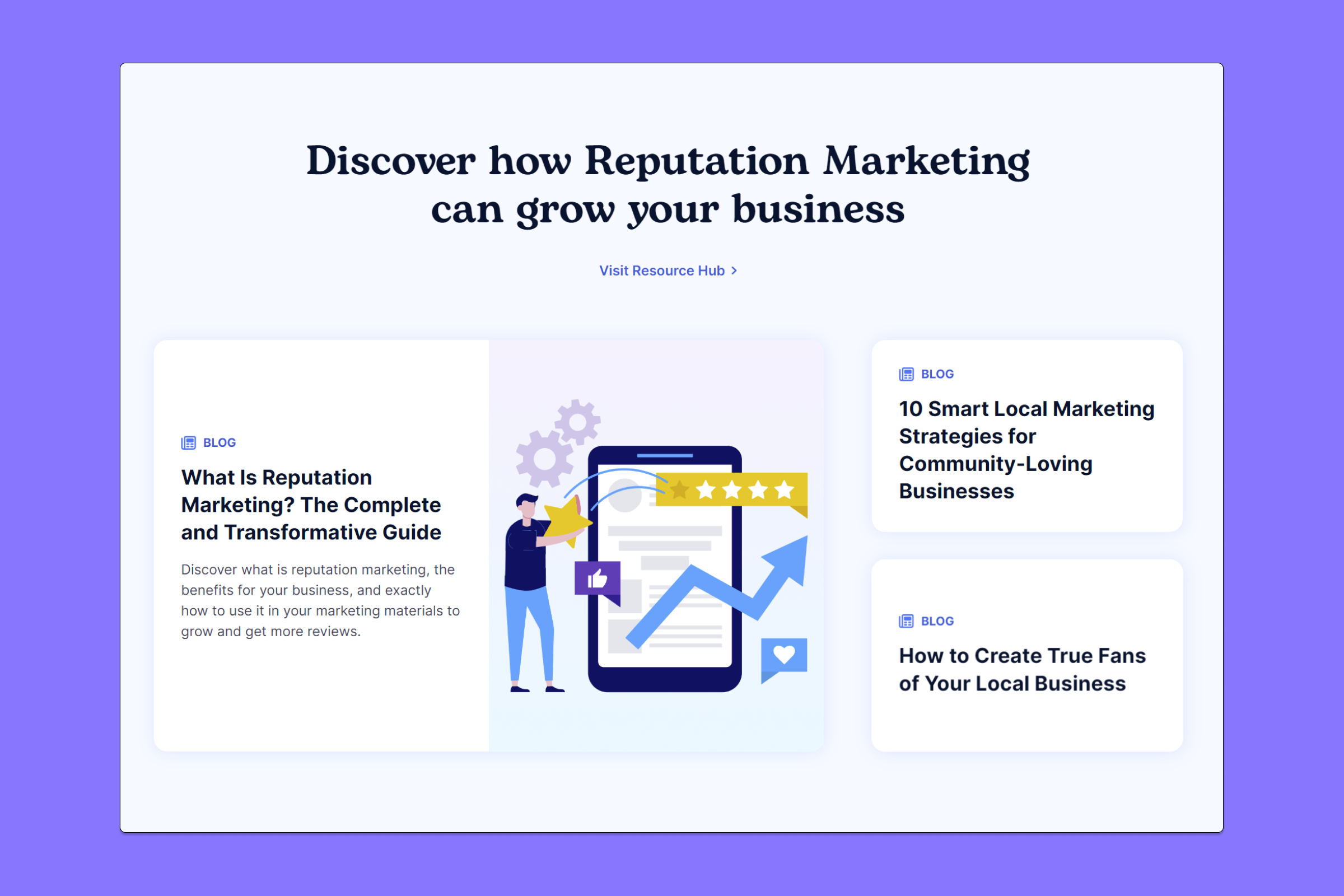
This enables effective internal linking and guides the user flow from their first homepage visit.
Within this section, we will explore three key types of landing pages that can effectively guide users to relevant parts of a SaaS website and capture demand through organic search. These pages include:
These pages should focus on addressing the core pain points and desired outcomes of potential customers.
They enable the segmentation of your software’s offerings based on visitors’ needs and create pages designed to capture organic search interest.
To develop a successful features and benefits page, consider the following aspects:
These pages highlight different ways your software can be utilized by various users. It is crucial to tell the story in a way that resonates with each user.
For instance, a single solution might fit multiple use cases, or several features could apply differently to each case.
Use case pages can:
Applying the Jobs To Be Done framework can effectively segment your product for specific roles and personas.
By developing landing pages that speak to each target’s core job, genuine problem, and desired outcome, you can facilitate smoother purchase decisions.
Critical aspects to consider when creating role-based and persona pages include:
Following these guidelines will allow you to create landing pages that showcase your SaaS product’s features, use cases, and potential applications for different roles while improving conversion rates and enticing potential customers to explore your offerings.
An effective pricing page is crucial for lower ACV products.
It should present pricing information and CTAs for each plan clearly and above-the-fold. Five essential elements of a SaaS pricing page are:
By organizing the pricing page effectively, you give users the ability to compare plan options and simplify their decision-making process through social proof.
Deep Dive: SaaS Pricing Page Strategies
Incorporating elements such as free trials can further increase conversions, enhancing the conversion rate and attracting more paying customers.
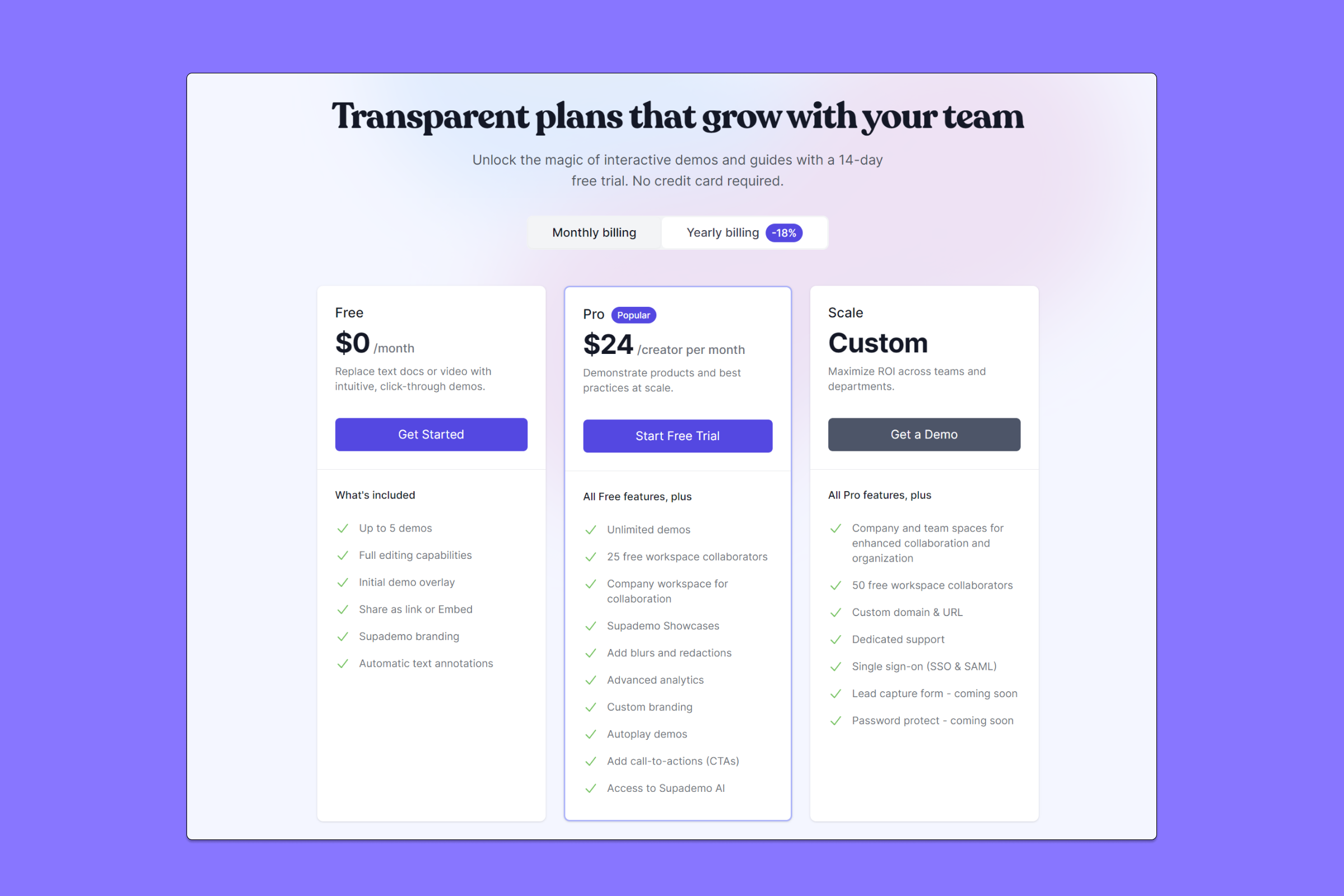
For assistance in creating a successful site architecture to turn visitors into customers, consider reaching out to a professional for guidance.
Creating a dedicated section on your website for informative content is essential for engaging your audience and generating leads.
This area can host valuable resources that educate as well as address the specific concerns of potential users.
Deep Dive: SaaS Blog Design Best Practice
When developing this content hub, consider three often-neglected aspects:
Remember, a well-crafted content section not only serves as an educational resource, but also helps generate revenue and enables your business to dominate search engine results pages (SERPs). The key to success is to be original, creative, and focused on your audience’s needs.

Categorizing target keywords is crucial for effective keyword research in the SaaS industry. Analyzing search intent helps ensure the delivery of content that matches users’ needs and questions. This understanding aids in:
Taking search intent into account prevents aimless content creation and ensures a more targeted approach.
It’s essential to understand and categorize keywords based on user intent.
The target keywords can be classified into four categories: commercial, transactional, informational, and navigational.
By creating content for each category, one can better serve the target audience while increasing SEO effectiveness.
To begin, think of potential keywords that align with your SaaS product or service.
Consider user pain points and how customers might search for your solution online.
Jot down these ideas; later, we’ll validate their metrics and prioritize accordingly using keyword research tools and Google Search Console.
For example, if you offer HR employee management software, your list might include:
Google Search Console is a goldmine for marketers to tap into valuable data and understand which keywords and phrases their website is already ranking for.
By analyzing this data, they can improve their website’s position in search engine results with strategic content updates and on-page SEO techniques.
To access this data, navigate to “Search Results” in Google Search Console.
This will display a list of all queries a website is ranking for, along with metrics like clicks, impressions, click-through-rate (CTR), and position in Google search results.
Sorting by CTR in ascending order will show pages with lower CTR, which are prime candidates for optimization.
By selecting a specific page and filtering by its position, marketers can find additional relevant keywords to target as secondary keywords on the page or even create separate pages to rank for them.
Look for keywords ranking between positions 5-20, as these are strong indicators of relevance.
Deep Dive: SaaS Keyword Research Strategies
One way to gain valuable insights into successful strategies is by examining Google Ads campaigns and other paid promotions.
This information can be applied to the organic side during the keyword research process.
Marketing teams typically have access to their own running paid campaigns, which can be found in Google Ads and Google Analytics.
However, it can be even more beneficial to investigate competitor ad campaigns to understand their paid marketing investments.
By using tools like Ahrefs, you can easily identify a competitor’s current keyword bids and their running ads. To do this, simply enter the competitor’s domain name and choose “Paid Keywords” in the left-hand navigation.
To focus on the most relevant insights, filter the results to exclude branded keywords.
This will provide a clear picture of what your competitors are actively promoting through paid ads.
Delve further by exploring the specific ad copy: click on “Ads” in the left-hand navigation to find the copy, along with other data around keyword targeting and activity.
This is a treasure trove, revealing not only what competitors have accomplished organically but also the strategies they employ in their ongoing paid ad campaigns for driving conversions.
Incorporate formatting tools to enhance information presentation, such as:
Remember to keep the section concise and ensure that the content focuses on the relevance of entities like Google Ads, CPC, PPC, clicks, and cost per click.
A valuable approach to enriching your keyword strategy is to examine your sales team’s daily interactions with prospective clients.
By recording and analyzing these calls, you can identify the recurring issues and pain points that arise during the conversations.
Rather than relying on tools to assess keyword volume metrics, pay specific attention to long-tail phrases that may show little or no search volume, as these provide an opportunity to create targeted content that addresses your prospects’ specific concerns.
Unlike your competitors, focusing on these phrases allows you to better address pain points and common issues.
Classifying your prospects into categories such as Marketing Qualified Leads (MQLs) and Sales Qualified Leads (SQLs) enables you to understand their needs and concerns at each stage of the sales funnel.
Look for commonly used words and phrases during the calls and evaluate whether they are already incorporated into your website’s content.
Implementing this method requires time and consistency in reviewing calls and taking comprehensive notes.
However, it is a highly effective technique since it’s likely that most of your competitors are not utilizing it.
Conducting a keyword competitive analysis enables you to gain valuable insights into your competitors’ organic profile strategies.
Utilizing SEO tools like Ahrefs, you can learn about their primary traffic sources, targeted keywords, and their backlink-building resources.
To start your analysis, enter the competitor’s domain into Ahrefs and click “Organic Keywords.”
Apply filters to view keywords ranking in positions 1-2 and omit branded search keywords.
This reveals your competitor’s keywords that are ranking on Google’s first and second pages.
You might find that the dataset is too broad.
For instance, a competitor like BambooHR uses a glossary section to generate a large number of backlinks and about 50% of their organic traffic.
If you’re looking for informational content ideas instead of creating keyword glossaries, refine the data by excluding specific sub-folders or centering on a single sub-folder, such as a blog.
Further filter the list based on position, monthly search volume, and difficulty until you obtain a manageable set of keyword topic ideas that drive traffic and links for your competitor.
Some examples include:
Sort the list by volume (descending) and take note of the keywords to conduct more comprehensive research.
Repeat this process for other competitors heavily relying on organic search.
To better understand your customers’ pain points and improve their experience, closely examine customer reviews on platforms like G2 and Capterra.
Assess both your own profile and those of your competitors to identify recurring themes and customer concerns.
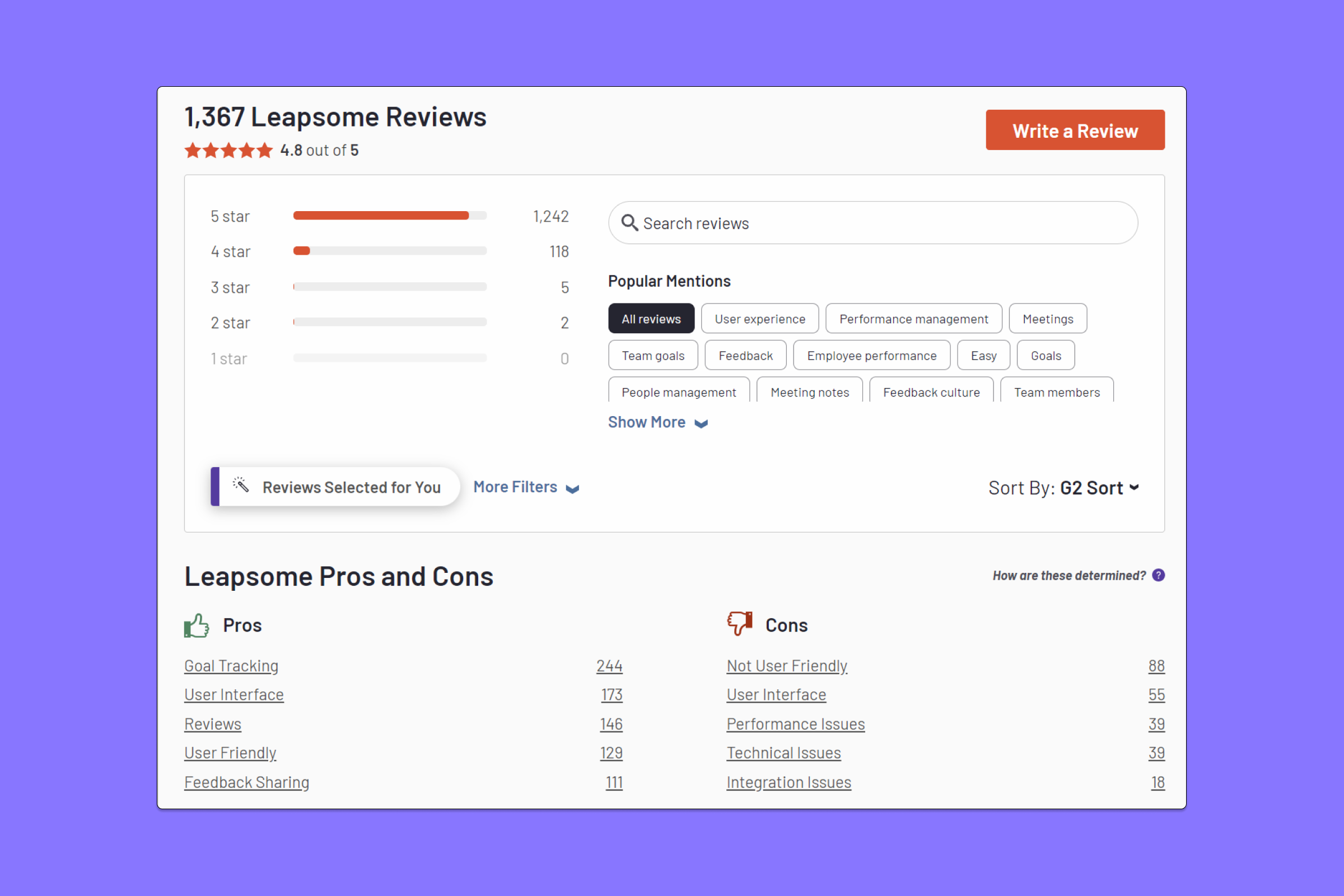
When you encounter common issues or keywords in these reviews, list them, and use keyword research tools such as Ahrefs or Google to explore existing content and metrics.
By doing so, you can create targeted content addressing these pain points for prospective clients searching for solutions.
Pay special attention to reviews related to customer support, as insights gained from these reviews can improve service delivery and overall customer satisfaction.
The Jobs-to-be-Done (JTBD) framework is highly effective in comprehending how customers utilize a SaaS product and creating suitable content for them.
For instance, HotJar showcases its features based on specific user roles like product teams, product managers, designers, and researchers.
To understand customers’ jobs to be done, consider these two approaches:
Applying the JTBD framework generates a plethora of keyword and topic ideas, allowing you to conduct further research and develop content tailored for each user role.
Google Suggest offers a valuable opportunity to discover relevant search terms connected to your target keywords. Take a keyword from your research and enter it into Google to generate a list of related queries. These queries are excellent sources of long-tail keywords for your research.
For example, suppose the initial keyword is “employee onboarding.” In that case, Google Suggest will display related terms such as:
Dig deeper into these related terms by entering them into Google Suggest, generating more specific queries:
Record these findings and later determine if they should have separate content pages or be incorporated as secondary keywords during content creation.
Competitor analysis is another crucial aspect to consider. Investigate your desired competitors’ ad campaigns to identify which ones are working well on the paid side.
Tools like Ahrefs or SEMrush are beneficial to reverse engineer your competitors’ strategies and see where they allocate their ad budgets:
This knowledge is valuable for both paid and SEO strategies, as it highlights potentially successful tactics used by your competitors.

When developing a content strategy for your SaaS business, it’s essential to consider your company’s current position in the market.
Different stages require different approaches to maximize the effectiveness of your content marketing efforts.
For well-established SaaS organizations with deep brand awareness, a strong product-market fit, and an authoritative backlink profile, it’s beneficial to begin at the bottom of the funnel and work your way up.
This approach allows you to capitalize on easy wins and quick results from micro-conversions, as the bottom of the funnel is where potential customers are searching for your solution.
On the other hand, if your SaaS company is new to the market with limited brand awareness and a weak link profile, it’s advisable to start at the top of the funnel, mixing in elements from the middle and bottom funnels.
The primary goal at this stage is to develop a strong link profile to boost your brand’s search engine ranking and enable you to target bottom-funnel demands later on. By focusing on creating linkable assets and a robust link-building strategy, your bottom-funnel content (where conversions happen) will be better positioned to rank competitively in search engines.
Incorporating these concepts in your content strategy means addressing the following key aspects:
By implementing a well-rounded SaaS content marketing strategy that considers your company’s position in the market, you can develop a tailored approach with the right techniques to target your audience, differentiate from the competition, and drive growth.
Creating guides is an essential part of your content marketing strategy. You should develop guides that correspond to the primary use cases for your product or service. For example, if your business is focused on customer retention, you can create guides that cover churn management, diving into topics ranging from high-level overviews to specific strategies.
These guides help educate your audience and raise awareness about the problems your product or service can solve. Include clear calls to action and link to mid-funnel resources like case studies to help guide your audience through the conversion process.
How-to content is valuable for occupying search engine real estate related to tasks your product or service can help with. By addressing common problems and offering expert solutions, you can showcase your skills and knowledge while demonstrating how your product simplifies the process.
Consider, for instance, a sales automation product: ranking for “how to automate Salesforce tasks” would be a prime opportunity to provide useful guidance while promoting your offering. Include comprehensive instructions and consider capturing readers’ email addresses with in-content resources to engage them further.
Engaging in thought leadership and opinion-based articles assists in building brand awareness during the discovery phase. As an example, consider a business that shares real stories about growing and scaling a SaaS company while offering valuable insights into relevant topics.
Positioning your brand as a thought leader allows you to share valuable perspectives and correlate your product’s benefits with the topics discussed, setting your brand up front and center in the readers’ minds.
Expert roundups connect industry relationships and provide detailed information on a subject while increasing brand awareness and driving users down the funnel. For instance, a SaaS company focused on user relationship management might compile expert advice on reducing customer churn, offering practical tips and insights from industry professionals.
In addition to benefitting from expert opinions, make sure to link out to the experts’ websites and include in-content calls to action to encourage users to progress down the funnel.
Deep Dive: SaaS Content Strategy
By incorporating these top-of-the-funnel content elements – guides, how to’s, thought leadership, and expert roundups – into your content strategy, you can effectively build brand awareness, educate your audience, and guide them down the path towards conversion while showcasing your expertise and your product’s value.
Integrating tools related to your product is a highly effective method to quickly enhance your link profile while also demonstrating the benefits of your product. Successful SaaS products often use product-based tools to expand their content efforts, acquire external links, and boost overall performance.
Examples of product tools can include:
For instance, Clockify has built an impressive presence with product-style tools, such as printable timesheets that can be customized and utilized in various ways. This strategy has helped strengthen their link profile and contributed to ranking higher in search results.
Conducting market and industry research is a valuable approach for building the case for your product usage. This content type should focus on general trends within your industry and how similar SaaS products are being utilized. By providing valuable data and research to your target market, you can empower them with the information they need to advocate for your product internally.
Sharing market research is also highly shareable on social media and can serve as a natural link generator, further enhancing your credibility.
For example, Veeam, a B2B SaaS company in the enterprise data backup and protection space, created the “2022 Data Protection Trends Report.” This asset showcases industry data through mini-videos and downloadable reports, positioning Veeam as a thought leader while aiding internal marketing teams in building the case for their product.
Crafting case studies around keyword search intent is a highly effective way to demonstrate how you have solved your clients’ problems. By creating case studies that are discoverable in search engines, you can help potential customers find you more easily.
For instance, let’s say you offer video marketing services through customer video testimonials and social proof creation. Including the term “video marketing strategy” in your case study allows you to display how you have executed video marketing for clients and achieved positive outcomes.
One example is Lemonlight, which specializes in video marketing services. They have crafted case studies based on specific search terms, subsequently showcasing their clients’ testimonials and success stories.
Utilizing relevant search terms in your case studies not only improves discoverability but also allows your clients’ testimonials to speak for themselves, ultimately contributing to more conversions and sales.
Features and benefits pages serve a crucial role on your website as they target specific queries related to your product and the solutions users seek. When you optimize these pages based on search volume, you can reach potential customers actively searching for what your product offers. By being precise with the copy and including compelling CTAs, you guide prospects towards booking demos or signing up for trials.
Competitor comparison pages focus on your brand against a competitor’s, whereas alternative pages target users considering switching from their existing product. Both types have bottom-funnel intent, and your aim is to capture that search volume. By creating these pages, you gain control over the narrative surrounding your product, rather than letting competitors or aggregators dictate the conversation.
Use case pages aren’t directly related to your product features or benefits but focus on the outcome users want to achieve. Consider your SaaS product capabilities and think about specific actions users accomplish with your product. Then, create pages capturing search volume related to those actions.
If your product has integrations with other software, optimizing your content for search queries involving those integrations can help you attract highly relevant, bottom-funnel traffic. By creating a comprehensive integrations hub, as well as individual landing pages, you can present your offerings as extensive solutions for a wide range of platforms.

Link building is in and of itself essentially a whole category underneath of the SEO umbrella.
Links play a crucial role in pushing high rankings.
Generally, high-quality links include the following qualities:
There are really three ways links can be built:
Link building for SaaS companies can be a daunting task, but it doesn’t have to be. With the right strategies and tactics, it’s possible to quickly scale your link profile and dominate the SERPs.
In fact, SaaS link building is one of the easiest spaces to build links in due to the abundance of techniques that can be implemented.
To help SaaS organizations build backlinks at scale, a list of battle-tested link-building strategies has been compiled.
These strategies have been proven to generate natural links to websites and build leads to nurture into sign-ups.
When it comes to content marketing for SaaS companies, there are three core types of content that exist.
The first type is content built to provide information and educate the industry or target audience.
The second type is content built to serve non-search-related topics, which most likely shouldn’t be indexed in Google.
The third type is content built to act as a linkable asset, which is its core purpose to generate quality links.
When building a content strategy for clients, the primary focus should be on content that falls into buckets one and three.
The best-in-class value-add content is world-class content that educates the audience and provides value.
It is not only going to allow you to build out your content leads, which you can nurture over time, but it’s also going to allow you to quickly scale your link profile.
To create this style of content, it is essential to find out what problems and roadblocks your audience is facing in their everyday jobs. This challenge doesn’t even have to be an exact solution your SaaS provides as a feature. Instead, go and help them solve this problem. Build an extremely in-depth, actionable guide that can help them smash through their challenges and educate them.
One of the most-linked to and most-trafficked pages is HubSpot. It provides value and solves a problem. When you build this style of content and promote and distribute it, it’s naturally going to pick up links over time.
The best-in-class value-add content is essential for SaaS companies to generate quality links and build out their content leads. By providing value and solving problems, SaaS companies can quickly scale their link profile and educate their audience.
Creating a curated piece of statistics or trends is an effective way to build links for your industry. Utilizing existing statistics from sources like Statista, Google News, and other research reports can help you create a single-curated statistic piece that can act as a reference point in other content.
Conducting your own in-house study requires a lot of planning, resources, and time. Although it is preferred, utilizing existing statistics and referencing them works extremely well to build links. This strategy can make the job of content creators much easier and they are likely to link to your piece of content as a resource.
Exploding Topic’s entire blogging strategy is based on this approach. They curate statistics for a given topic, link to them as a resource, and create a single piece of content. Their team also builds out visuals to go with the content, making it a super resource to link to.
Link building is an essential part of SEO strategy, and most companies who outsource link building spend at least 25% of their SEO marketing budget on it. High-authority, contextual backlinks average from $700-$2,000 or more per link. Nearly half of all SEOs spend $10,000 or more annually on link building.
Most SEO experts believe that link building is one of the top two ranking factors used by Google to determine a web page’s rankings. Organic traffic is the most important metric for measuring the success of a website, followed by search engine ranking.
The SaaS industry is expected to grow significantly in the coming years. The global SaaS market is projected to grow 28% YoY to $333.03 billion in 2023 and $819.23 billion by 2030. Revenue share for software (compared to services) was more than 84% of the SaaS market.
Creating a curated piece of statistics or trends can act as a link magnet and help improve your SEO strategy. Utilizing existing statistics from reputable sources can save time and resources while still being effective. The SaaS industry is expected to continue its growth trend in the coming years.
API documentation and how-to guides are valuable resources that can help bolster a SaaS company’s link profile. By providing structured and informative documentation, SaaS companies can create linkable assets that other websites are likely to reference. For example, Zapier’s API and documentation directory has over 193 RDs pointing to it because it’s a valuable resource that gets linked to naturally.
To create effective API and how-to documentation, SaaS companies should consider the following:
By following these best practices, SaaS companies can create valuable resources that not only help their user base but also attract links from other websites in their industry.
Brand mentions without a link can be a missed opportunity for link building. Unlinked brand mentions scattered across the web offer excellent link-building opportunities. The aim is to identify instances where your brand is referenced without an associated link. By setting up alerts on platforms like Google News, you can routinely identify such mentions.
The best way to handle branded mentions without a link is to simply reach out and ask for them to link over to your website. There are plenty of tools on the market to allow you to monitor brand mentions for your business, which can be extremely valuable not only for link-building efforts but also for brand awareness. Awario is a great choice that will allow you to plug in one or multiple queries (i.e. business name, founder’s name, etc.) and you’ll receive a notification to your inbox every time it’s found newly mentioned online.
It’s important to note that some websites may not be willing to add a link to your brand mention, but it doesn’t hurt to ask. A polite email or message can go a long way in building relationships and potentially gaining a valuable link.
Industry roundups are curated lists of the best content, quotes, or tools in a particular industry. They are a very effective way to quickly build backlinks at scale. Creating a successful roundup can explode organic visibility, but it’s important to provide value to the audience.
One example of a great roundup is the “Top 11 HR Management Software Tools” created by UserGuiding, a SaaS software that helps onboard users with product walkthroughs. This piece can pick up a ton of links if it provides value to the audience.
In addition to creating your own roundups, you can also find existing roundups to pitch and get on their list. Simply go to Google and use the following query without quotations: “intitle ‘industry keyword'”. For example, “intitle ‘HR software'” can help you find other existing roundups to pitch.
Industry roundups are also a great opportunity to showcase your brand and build relationships with other companies in your industry. By featuring other companies in your roundup, you can create a sense of community and establish yourself as a thought leader in your industry.
Another effective link building strategy is widget link building. Many SaaS brands have built killer link profiles naturally by having an embed or widget that’s part of their software. Widget link building is when you have an embeddable object, normally a snippet of code in JavaScript, which the client then embeds on their website to display statistics, trust, or some other mechanism that your service provides.
SaaS businesses in the review collection and reputation management space, like TrustPilot, BirdEye, and YotPo, provide a ton of different functionality, but one of the pain points they solve is allowing businesses to both collect and display testimonials on their websites. When a client embeds the review display widget on their website, they’re naturally providing a link to the provider’s website, which is counting towards their link profile and overall authority.
If your SaaS has a natural application for a widget or embeds on the client’s website, you’re going to have a very easy time scaling up your link profile as you acquire customers. It’s also possible to think outside of the box here to expand your functionality for this sole reason.
Industry roundups and widget link building are great opportunities for SaaS companies to quickly build backlinks at scale and establish themselves as thought leaders in their industry. By providing value to the audience and creating a sense of community, SaaS companies can successfully build their link profiles and boost their organic visibility.
Reviews and testimonials are a great way to build social proof and trust with your audience.
They can also help you get free links and brand mentions from companies whose service or software you use.
By reaching out to these companies, you can express your interest in being featured on their reviews and testimonials page.
Businesses often link out directly to your website from their reviews and testimonials pages, which can drive referral traffic and improve your SEO.
HARO, also known as Help a Reporter Out, is a free online platform that connects journalists with sources for their stories.
It is a networking tool that allows journalists to publish a story they’re looking to cover and to connect them with businesses and experts on that topic to do a story on.
Journalists are constantly in need of content, and HARO can be an absolute goldmine if you put in the time to monitor opportunities, and pitch your business.
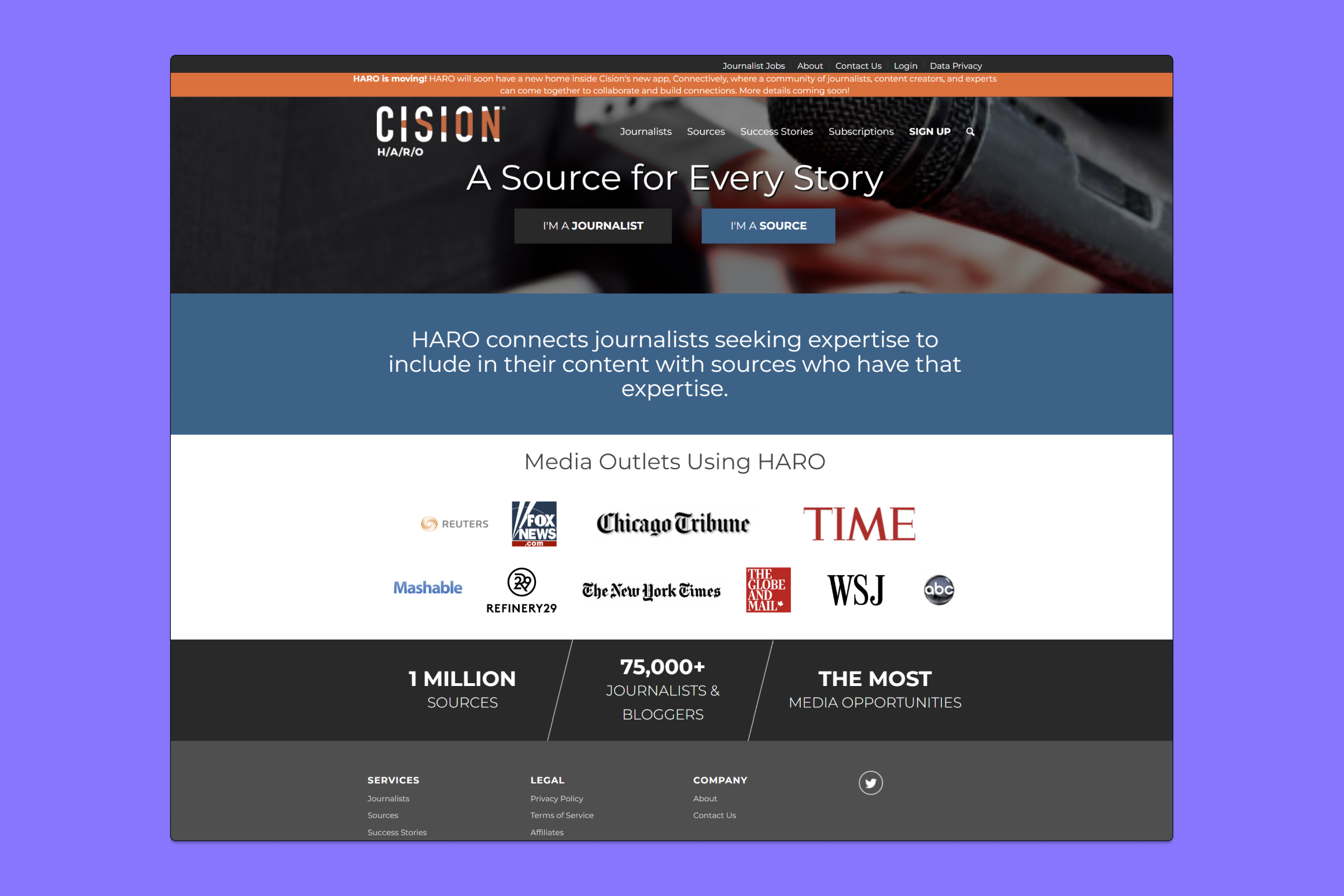
Once a user signs up for HARO, they receive daily opportunities straight to their inbox that fall under different categories.
These categories include Business and Finance, as well as Technology.
Users can click into any opportunity, and they’ll have the full details of what the story is about, and what the journalist is looking to cover in-depth.
To participate in HARO, you need to sign up as a “source” and they’ll start to receive opportunities straight to their inbox.
Once you find an opportunity that matches their expertise, they can reach out to the email listed, give their answers, and wait for a follow-up or interview.
HARO is an excellent tool for outreach, and it can be used for free.
It is a great way to gain brand awareness and links.
By monitoring and pitching journalists on HARO, businesses can use their product angle to gain publicity.
Guest blogging, also known as guest posting, is a link-building tactic that still works well today.
The goal of guest blogging is to create high-quality, valuable content for a target business’s audience.
To achieve this, a writer builds a genuine relationship with the target business and eventually asks to create relevant content for them to publish.
While guest posting can be a lucrative way to build links, it requires a skilled team with a process to accomplish.
Outreach and relationship building are time-consuming exercises that need careful attention.
Many marketing and content teams use guest posting as a core way to build links for their clients. It has landed them on hundreds of high-authority, quality websites.
SaaS directories and review sites are a great way to increase the visibility of your SaaS company. In addition to the popular sites like G2 and Capterra, there are plenty of smaller niche directories and review sites that are specific to your industry.
By doing a simple Google search, you can find these directories and review sites and get your SaaS company listed on them.
Listing your SaaS company on these directories and review sites not only helps build do-follow links, but it also helps you get in front of your target audience.
This is especially true for niche directories that rank well for software-solution-related queries.
Analyzing the backlinks of competitors using tools like Ahrefs can reveal many opportunities to build high-quality backlinks.
By compiling a list of competitor’s links, one can identify ways to get featured on those websites.
This can be achieved by pitching a higher-quality resource, replacing a broken link, getting featured as an additional resource on a round-up, or networking with the person in charge of content marketing to find out what topics are in the pipeline to get a placement.
Replicating competitor’s links can be an effective way to improve one’s backlink profile and stay ahead of the competition.
The Glossary page method is a simple yet effective strategy that can help SaaS organizations to capture searchers looking for definitions of industry-specific terms and jargon.
By setting up a glossary resource with relevant terms and providing expertise on the topic, SaaS organizations can educate their audience and increase brand awareness.
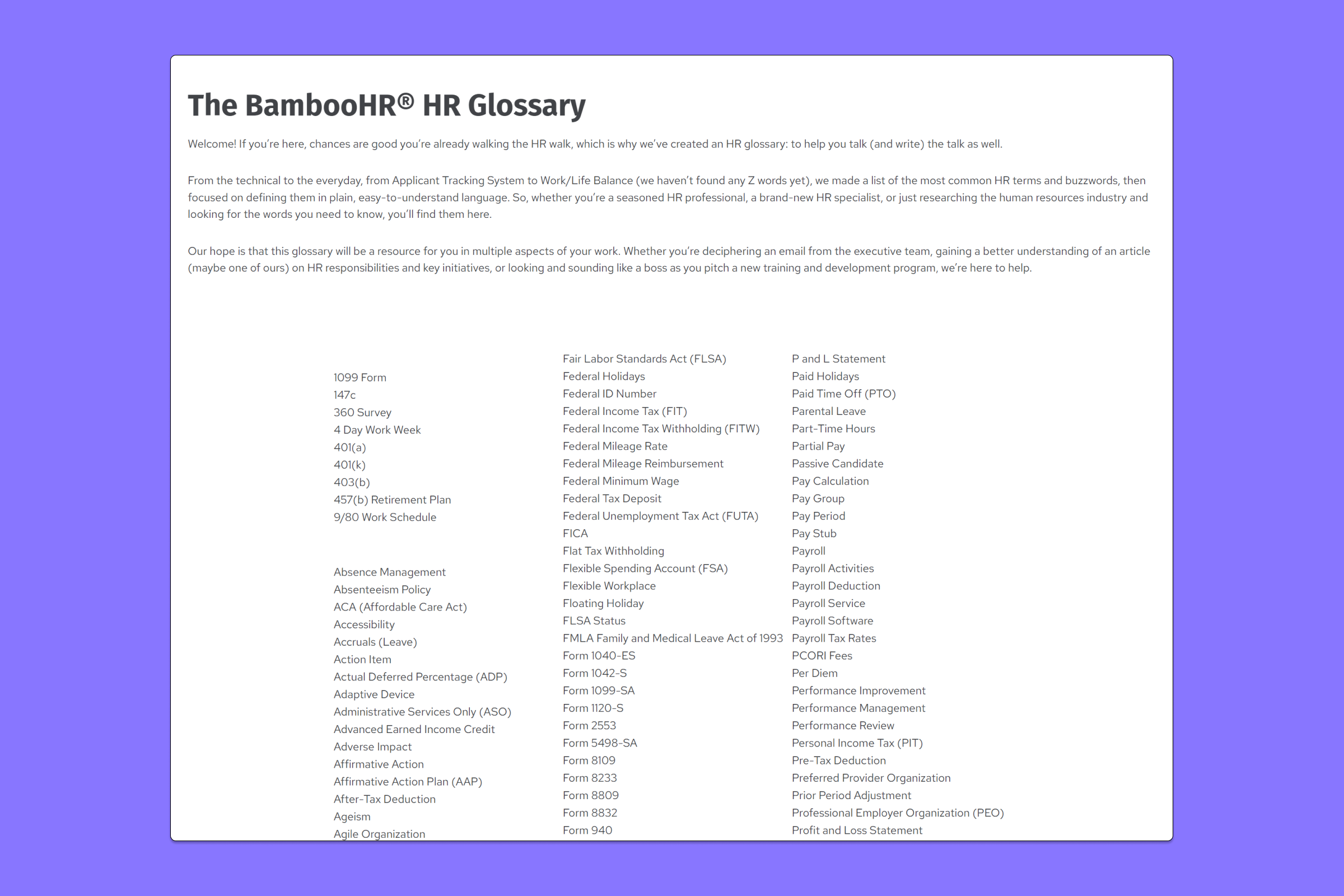
The Glossary page method works especially well for SaaS organizations that use a lot of jargon in their industry. The more niche the industry, the better this strategy can work.
By driving topical relevancy to other pages/terms that the organization wants to rank for, the Glossary page method increases authority, generates links naturally, and provides value to the audience.
To implement the Glossary page method, SaaS organizations can create a general Glossary page that contains all their entities or create a Glossary based on a specific type of entity or category.
The Glossary page can also be used for lead generation through an email list, free course, or other value-add educational resources.
Paid link acquisition is a contentious topic in the world of link building.
Google frowns upon any attempt to manipulate search rankings through paid links.
However, it is a reality that many authoritative websites sell link placements and articles in exchange for compensation.
This practice is common among PR agencies and firms that have existing relationships with these websites, and pays for their placements to get their clients quality links.
The cost of paid link acquisition can add up quickly, with high-quality links selling for prices in the 5-digit range for a single link.
This makes it difficult for businesses with limited budgets to compete with those who have deep pockets and can scale links fast simply by paying for them outright.
Despite the potential benefits of paid link acquisition, it is not a recommended practice.
Instead, businesses should focus on building higher-quality content and content distribution using other methods.
By building a process and link magnets using these methods, businesses can quickly scale their link efforts for minimal cost, without shelling out 5-digits per link.
It is important to note that paid links can be either follow or nofollow links.
Follow links pass link equity, helping to boost search rankings, while nofollow links (arguably) provide less value. Therefore, it is important to prioritize quality over quantity and focus on acquiring follow links.
Anchor text is also an important consideration when it comes to link acquisition.
It is important to ensure that the anchor text used in the links is relevant and diverse, rather than using the same keyword-rich anchor text repeatedly.
Link exchanges, where two websites agree to link to each other, are another form of paid link acquisition that should be avoided.
This practice is frowned upon by Google and can result in penalties.
When a business acquires another business, it can leverage the acquired business’s domain authority to boost its own visibility and authority.
One way to do this is by strategically 301-redirecting the acquired domain to the acquiring company’s domain.
Expired domains with good link profiles can also be purchased and redirected to the acquiring company’s domain. Although this technique falls in a grey area, it can still work very well when done properly to quickly bolster up a company’s link profile with relevant, quality links.
When executed correctly, 301 redirects can help maintain the SEO integrity of a website while diverting traffic away from inactive pages.
This is why it is a preferred redirect for SEO purposes.
Acquiring an authoritative website can also help boost a company’s authority and visibility.
By acquiring a website with a strong link profile, a company can gain access to high-quality backlinks and improve its own domain authority.
Overall, leveraging business/website acquisitions and 301 redirects can be an effective strategy for companies looking to improve their authority and visibility in their respective industries.
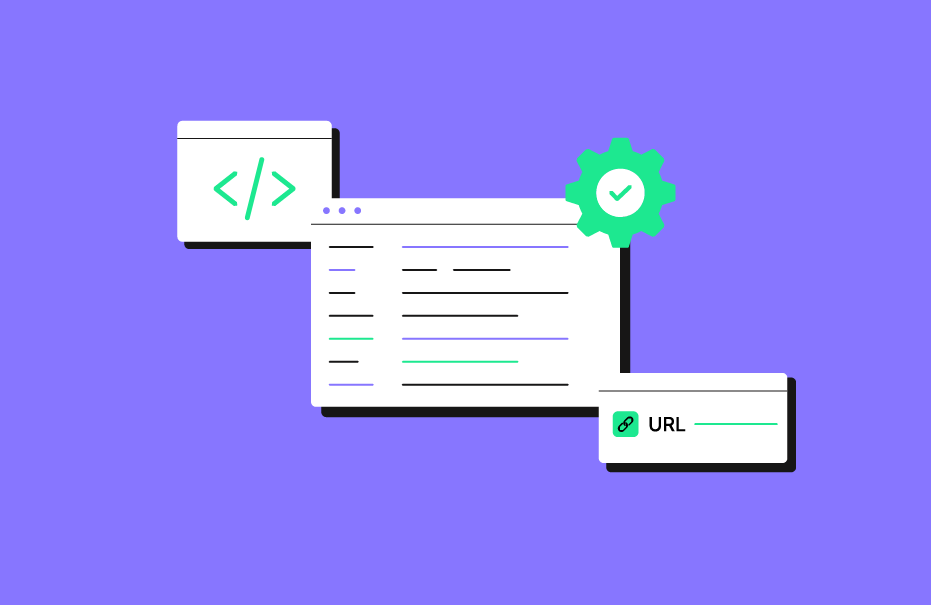
The process of Technical SEO refers to both website and server-size optimization which allows Google and other search engine bots to crawl and index a website more effectively.
Unfortunately, many SaaS businesses invest their time in low or no-impact technical SEO tasks, which fail to drive measurable results such as organic traffic, MQLs, trial signups, or demo requests.
However, for businesses that use popular CMS platforms like WebFlow or WordPress, technical SEO for SaaS should revolve around seven fundamental items to generate revenue-driving activities.
By concentrating on effective strategies and rejecting unnecessary fluff, SaaS companies can optimize their search engine performance and enhance their online presence.
We’ve broken these out into individual sections to explore the most important overarching topics:
A vital aspect of any SaaS website is its loading speed.
Quick load times encourage user engagement, leading to more content views, demo requests, and trial sign-ups. To assess the speed of your SaaS website, start with the following steps:
Loading times considerably impact a website’s performance.
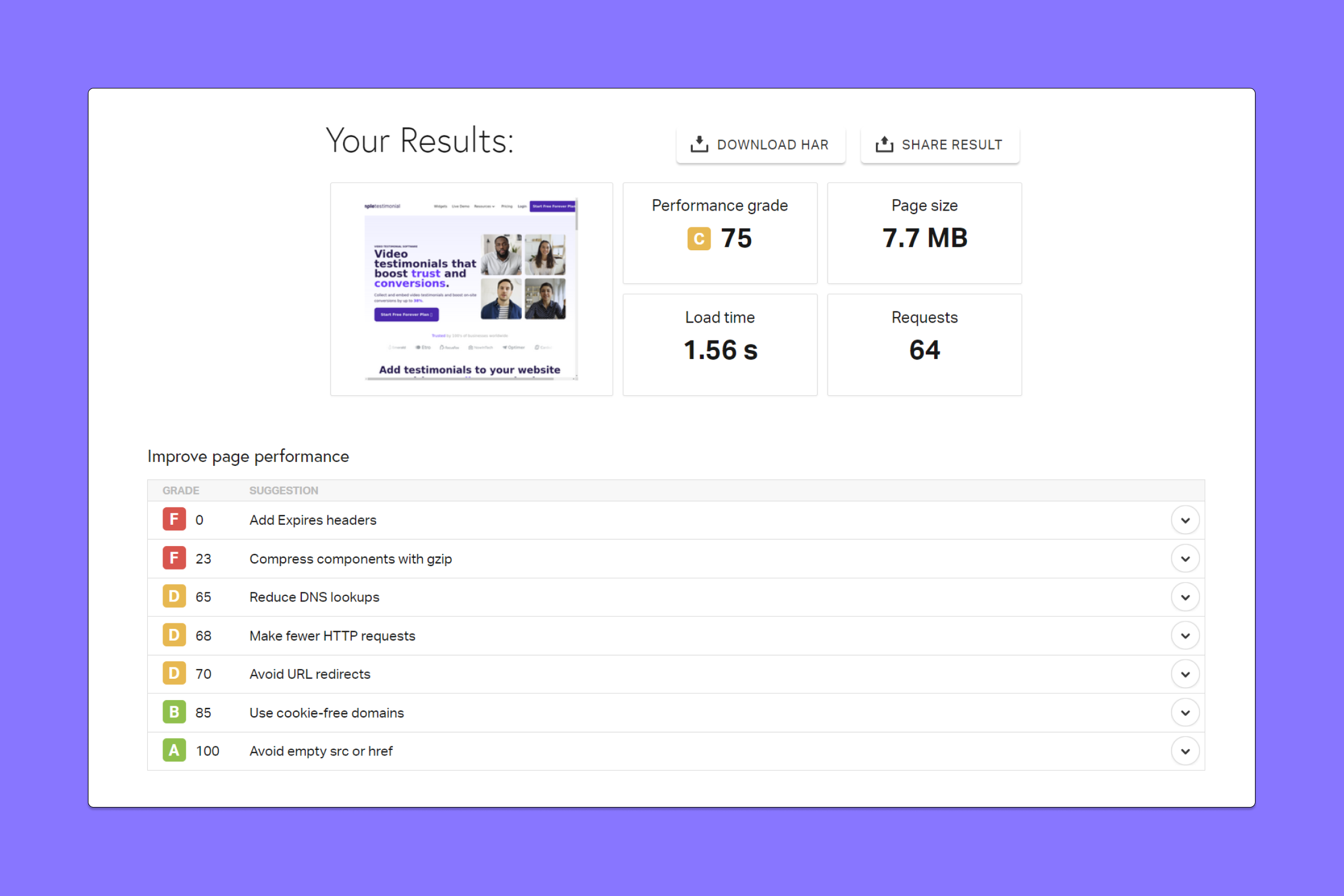
Ideally, SaaS websites and landing pages should load in under 2 seconds. To improve page speed, consider implementing the following measures:
Implementing these initial steps can help optimize website speed, ensuring better user experiences and higher engagement rates for your SaaS website.
Ensuring your website’s pages are crawlable and indexable by search engines like Google is crucial for visibility and search rankings.
To optimize your website for crawling and indexing, start by focusing on the sitemap, indexed pages, and internal linking structure.
The following actions can help enhance your site’s crawlability and indexability:
In addition to the steps mentioned, address the following factors to improve indexing:
Indexing involves search engines assessing your content’s relevance for inclusion in the search results pages (SERPs).
Implement the following during indexing:
A well-optimized mobile experience plays a significant role in search rankings, as search engines like Google look at the performance on both desktop and mobile devices.
Ensuring your website is mobile-friendly involves proper rendering and functionality across various devices and screen sizes.
This can be especially challenging for custom-built themes on CMS platforms like WordPress or WebFlow, or for websites not designed around a popular CMS.
Deep Dive: Technical SEO for SaaS
To maintain user satisfaction and search ranking, consistently monitor your site’s mobile performance using tools like Google’s Core Web Vitals.
It is essential to ensure that a website runs on HTTPS, as it provides encryption and security for the site.
Search engines consider HTTPS a minor ranking factor, but it also plays a significant role in maintaining user trust and encouraging them to invest in your product.
To verify if a site is secure, look for the padlock icon in your browser’s URL bar that indicates a secure connection.
If the website is not secure or its security certificate has expired, it is crucial to address these issues promptly. Implementing HTTPS is vital, as it not only affects a website’s SEO but also its overall security and user trust.
Canonical tags are essential components of on-page SEO, as they effectively address duplicate content issues by telling search engines the preferred version of a page to index.
However, incorrect usage of canonical tags can lead to detrimental effects on search rankings.
When canonicals are improperly set or accidentally added to pages, it can prevent those pages from being ranked by search engines.
This results in a lack of visibility and a decrease in organic traffic. To ensure proper use of canonicals, it is crucial to perform regular audits and examine the relationship between parent URLs and canonical URLs.
One helpful way to investigate canonical usage is by using tools such as SiteBulb for scanning websites or utilizing Chrome plugins like “Detailed SEO Extension” to quickly analyze page attributes, including canonicals.
While checking, if any mismatch or an unwarranted canonical tag is found, it is necessary to delve deeper into the issue to understand its root cause.
When dealing with websites serving multiple languages and countries, it is crucial to have a well-planned International SEO strategy in place.
Common mistakes often observed in such websites include mixed language content on the root domain, improper URL structure, and the absence of hreflang tags within the content pages.
Developing an effective International SEO setup involves making important business decisions, as this will impact the site’s success in the long run.
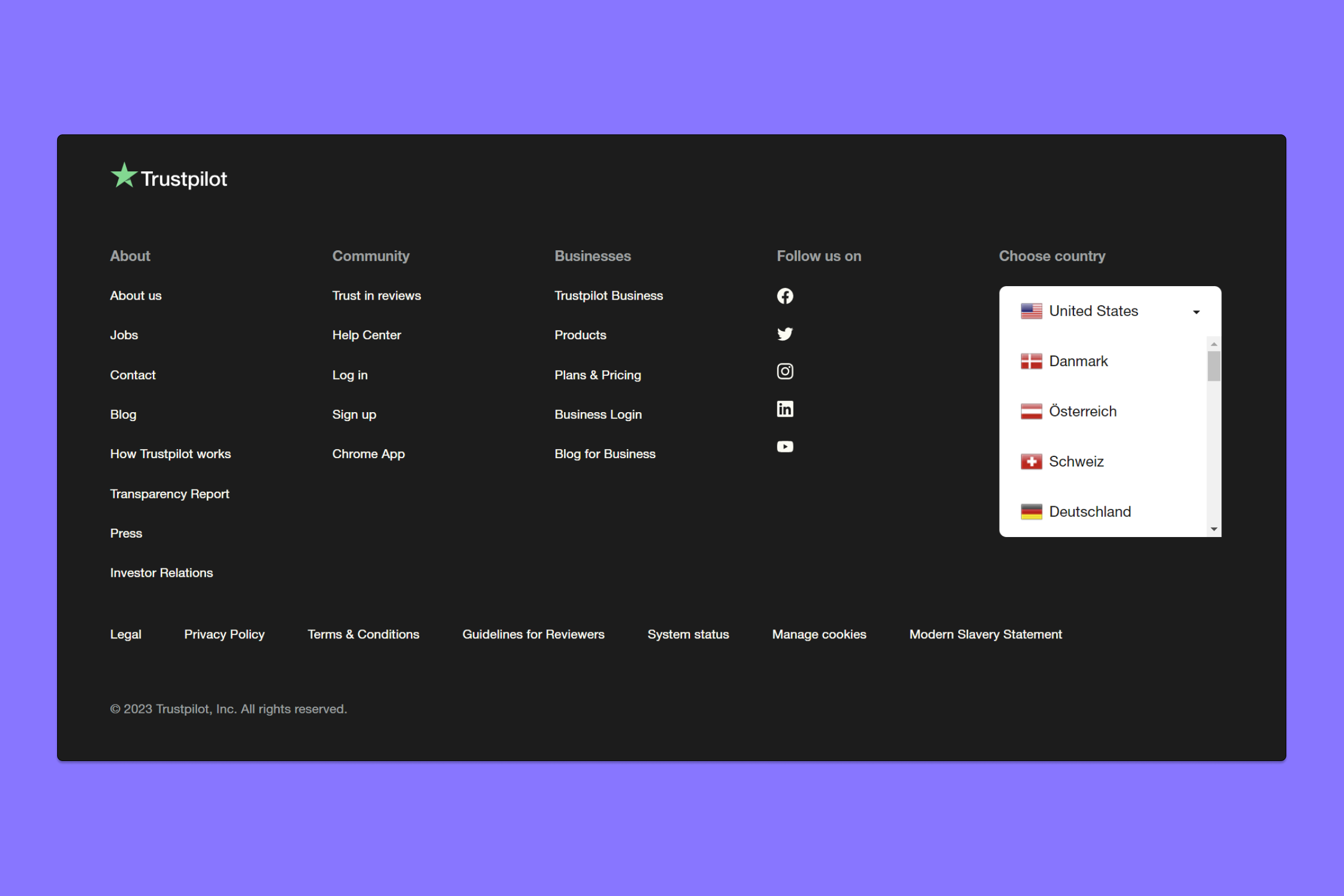
Based on the business’s goals and future plans, there are three core solutions for tailoring an International SEO strategy:
In a highly competitive B2B landscape, choosing the right International SEO structure is imperative for outperforming competitors and catering to a global audience.
If the multilingual pages on your website are not being indexed or ranked by Google, it is likely due to improper implementation of hreflang tags or other technical issues.
Deep Dive: International SEO Setup & Architecture
It’s essential to carefully evaluate your International SEO setup and make any necessary adjustments to ensure that your website effectively caters to users across multiple countries and languages.
Though populating meta titles and descriptions is generally associated with on-page SEO, it is crucial for your technical SEO strategy as well.
Ensuring that each page on your website has well-written meta titles and descriptions can greatly impact your website’s position in search results.
To optimize these essential elements, consider the following:
Analyze your website for the following:
These core on-page SEO items have a significant impact on your search result rankings.
If you find missing or poorly written meta titles and descriptions, create a content outline for the affected pages and rewrite or enhance the content to include these important on-page factors.
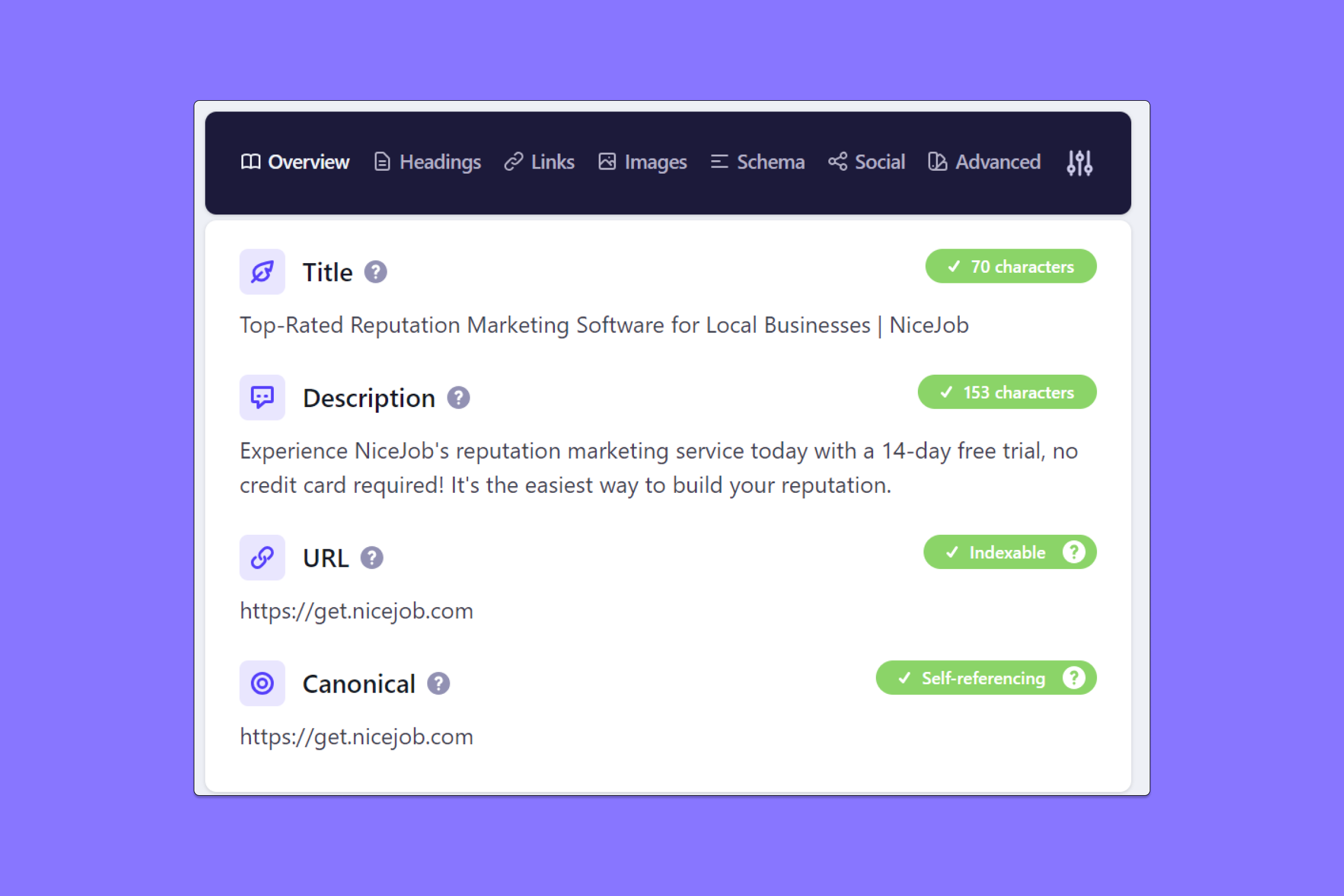
To quickly detect issues related to meta titles and descriptions, use a site-wide crawl tool like SiteBulb, which will provide high-level feedback and data.
Getting a 30,000-foot view of the crawl depth and internal linking structure of your website is an important starting point for any audit.
There are plenty of crawling tools available such as SiteBulb which not only crawl your website but also provide detailed insights into potential architecture-related issues of the website itself.
Related Content: How to Conduct An SEO Audit for SaaS Companies
One of the most important factors to consider when it comes to technical SEO would be how you’re linking to other pages on the website in order to get the best “bang for your buck” when it comes to passing what’s called link equity.
In the most basic sense, you want to link to important pages from your homepage, and you also want to be creating a spider-web effect between your related content topics.
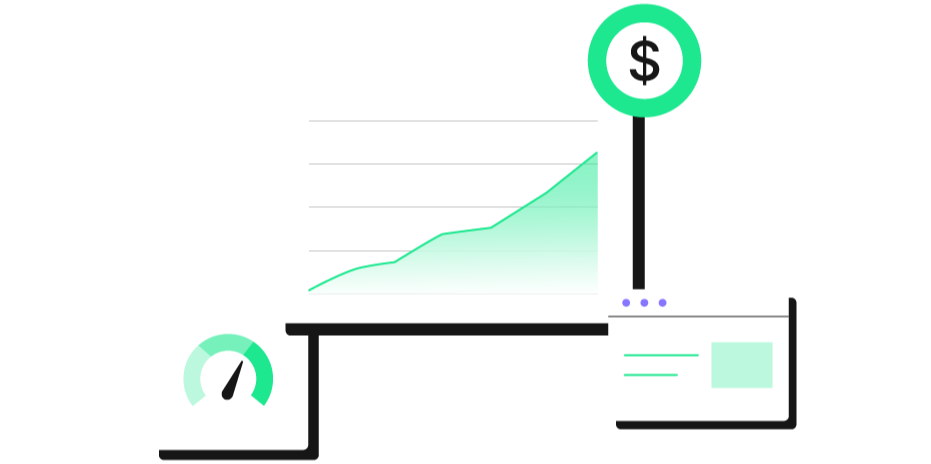
To make data-driven decisions and set realistic expectations for your SaaS company’s growth through SEO, you’ll need to determine key metrics.
Conducting a proper ROI calculation considers the following factors:
After defining these metrics, compare them to traffic lift expectations and overall investment, which will help clarify the decision-making process.
To begin forecasting various scenarios, input the appropriate data into a SaaS SEO ROI calculator and adjust the following elements:
Focusing on two primary questions is crucial for impacting your ROI:
Deeper Dive: SaaS SEO ROI Calculator
A favorable ROI in SEO relies on various factors, such as your industry and domain authority.
When assessing clients’ SEO investments, a typical range indicating good ROI would be between 400% and 500% (4x to 5x ROI).
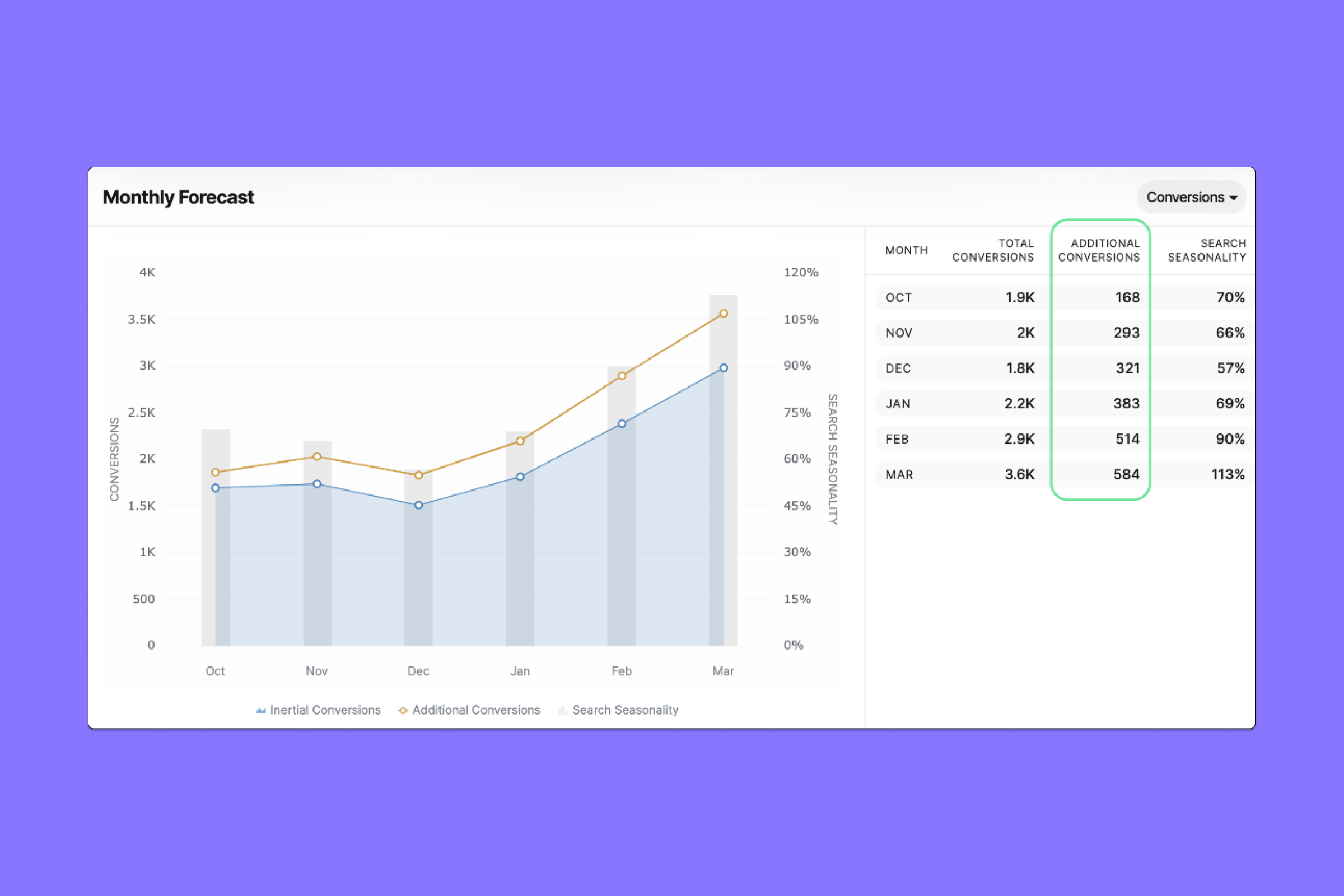
This helps assure trust in the work contributing to business growth.
It’s important to note that many ROI calculations do not consider the lasting effects of an SEO strategy. SEO can yield returns for several years, often up to 3-4 years or more.
If your organic approach continuously attracts the right audience and generates demos or sign-ups, this long-term value should also be acknowledged, even if most ROI calculators focus on a 12-month timeline.
Taking a conservative approach to estimates and prioritizing short to mid-term results, with the added benefit of long-term performance, is advised.
This mindset ensures a more accurate reflection of your SEO strategy’s profitability.
Consider the following key points regarding good ROI in SEO:
By understanding these elements, you can better evaluate the effectiveness of your SEO efforts and improve your overall marketing strategy.
SEO is a long-term process. You might witness some quick wins within 3-6 months, but in competitive niches, it may take 9-12 months or more to see significant returns on your investment.
Deeper Dive: How Long Does SEO Take to Get Results?
Keep in mind that if you are in the early stages of capitalizing on SEO opportunities, the timeline for turning your investment into revenue growth will likely follow this pattern.
Set realistic goals, and remember that patience and persistence are key in achieving success with SEO.
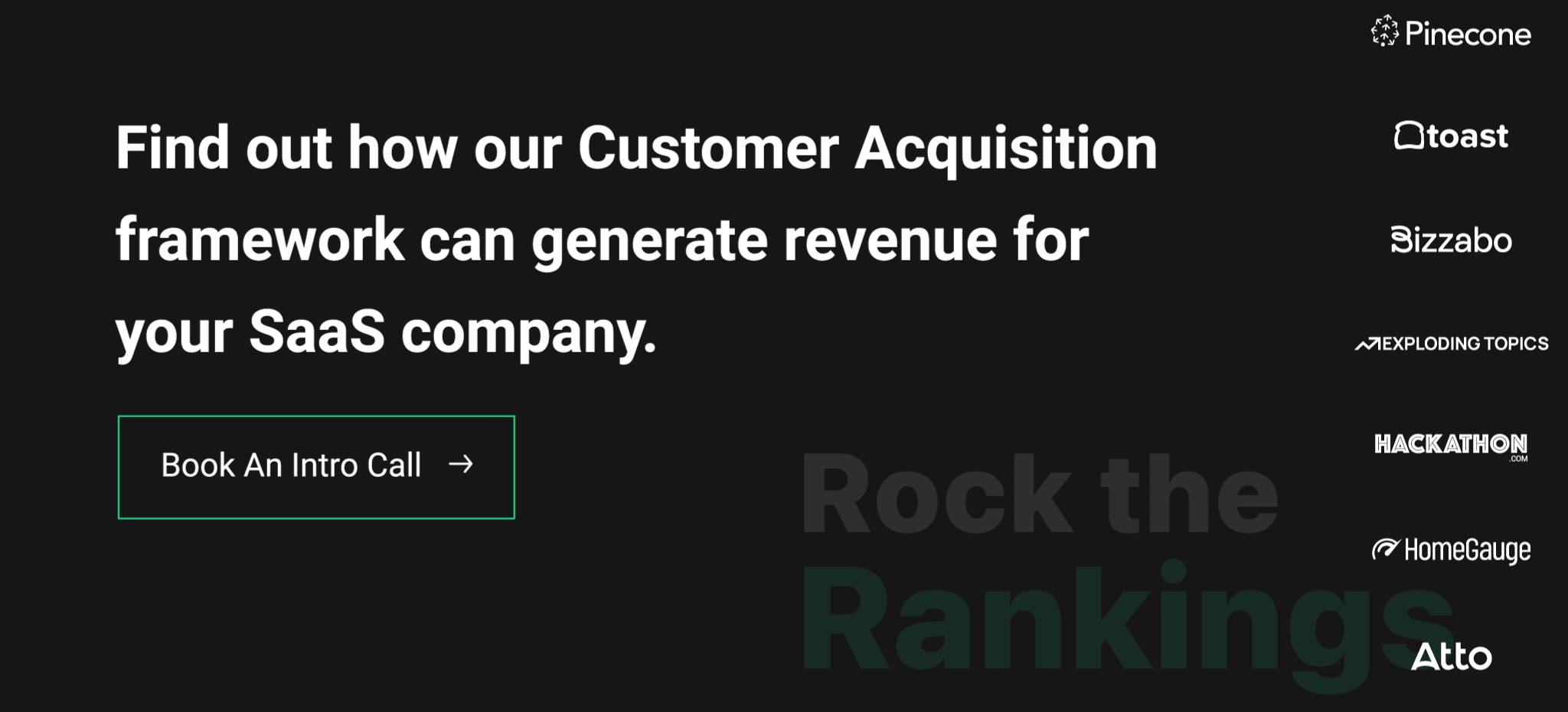
Founder of Rock The Rankings, an SEO partner that helps B2B SaaS brands crush their organic growth goals. An avid fan of tennis, and growing micro-SaaS businesses on the weekend. 2x SaaS Co-Founder – Currently working to build and scale Simple Testimonial.